Lima For Culture Lovers
Lima is much more than just a jumping off point for Inca adventures. Learn what there is to see, do, eat and explore in the Peruvian capital.
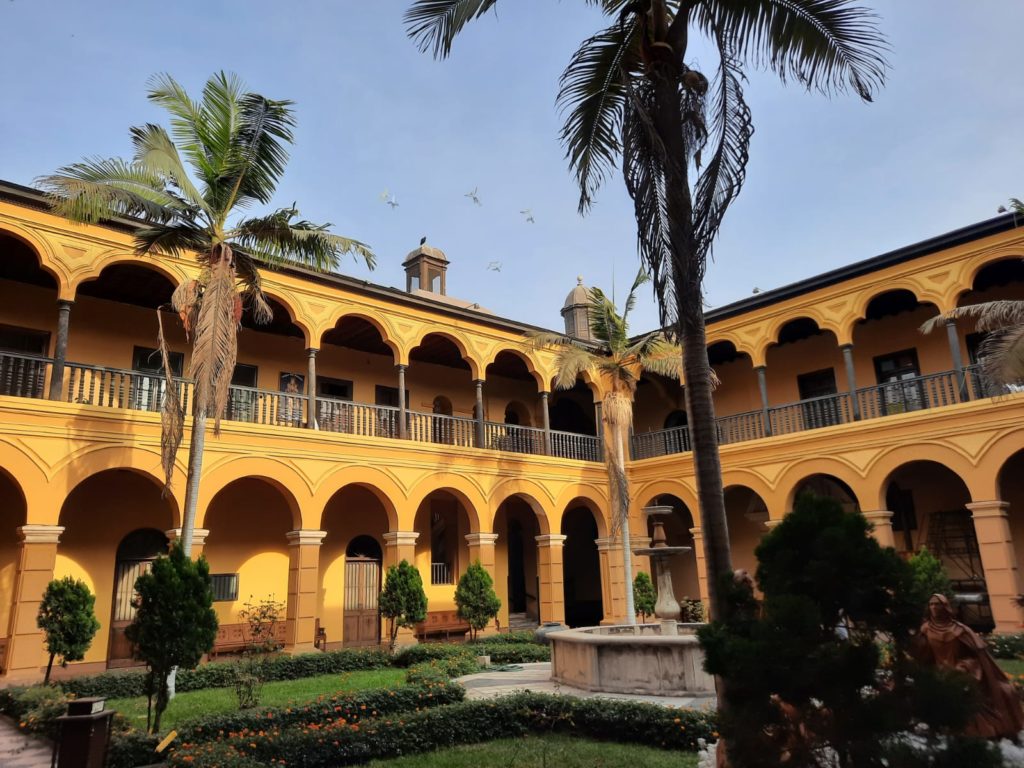
Introduction
Get ready, the Salterton Arts Review is on tour again! Like previous excursions to Venice, Lisbon and Ljubljana, you can expect dedicated posts on some of the museums and other cultural sites I visited on my travels. But before that, let’s get oriented!
Lima is the capital city of Peru; most people who fly into the country will at least pass through here. I was in Peru for a tour with G Adventures, and quickly noticed that many of my fellow tourists did little more than that; they arrived in time for orientation, maybe did a city tour if they had a free day. But not much more than that. They were in a hurry to get to Cusco, Arequipa, Iquitos or other destinations!
The Salterton Arts Review will never pass up an opportunity to explore a new place, however. So I had booked myself a few extra nights to spend time in Lima before and after my tour. And I loved the city. Sure, it’s vast and sprawling, one of the largest cities in the Americas with over 10 million inhabitants. It’s in a desert, which means rather peculiar weather if you visit in winter (like I did). And there is some serious wealth inequality, partly the result of massive influxes of inhabitants from other regions in the early twentieth century, and again in the latter part of the century (this time fleeing terrorism).
Once you see past these factors, there is a lot for the culture lover to explore in Lima. There are some top notch museums, for a start. Plenty of history, from ancient sites nestled in modern suburbs to colonial splendour. And let’s not forget Lima is also a culinary capital – of South America or even the world, depending on who you’re asking.
Let’s get ourselves oriented, then, before we dive into what Lima has to offer!
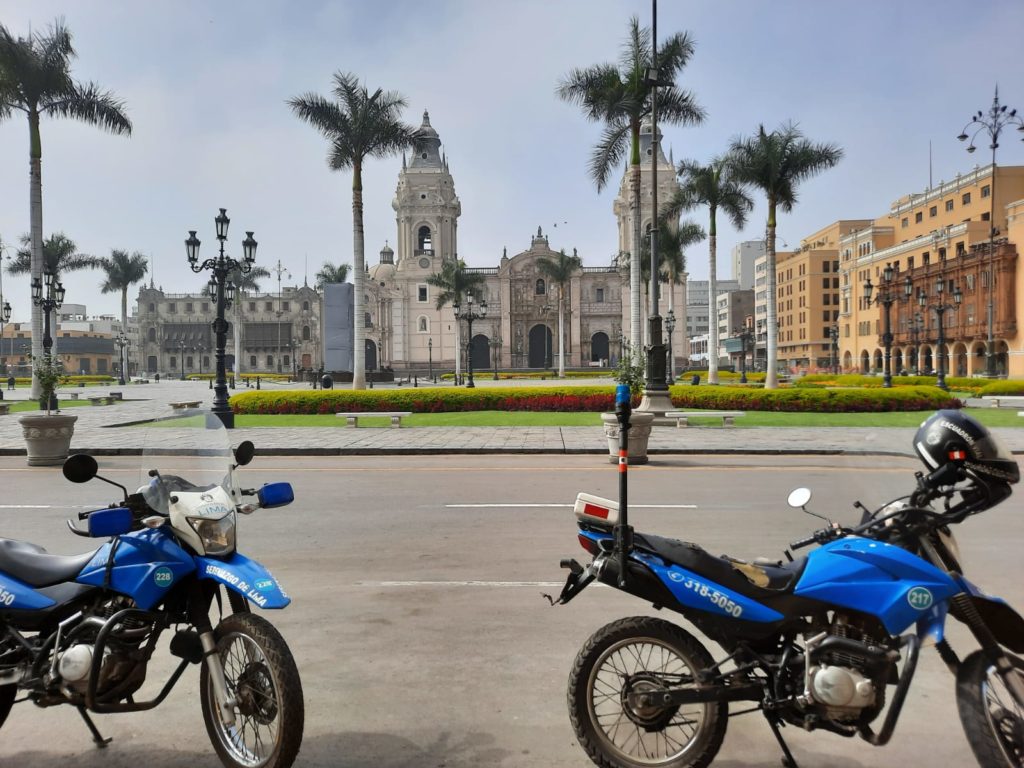
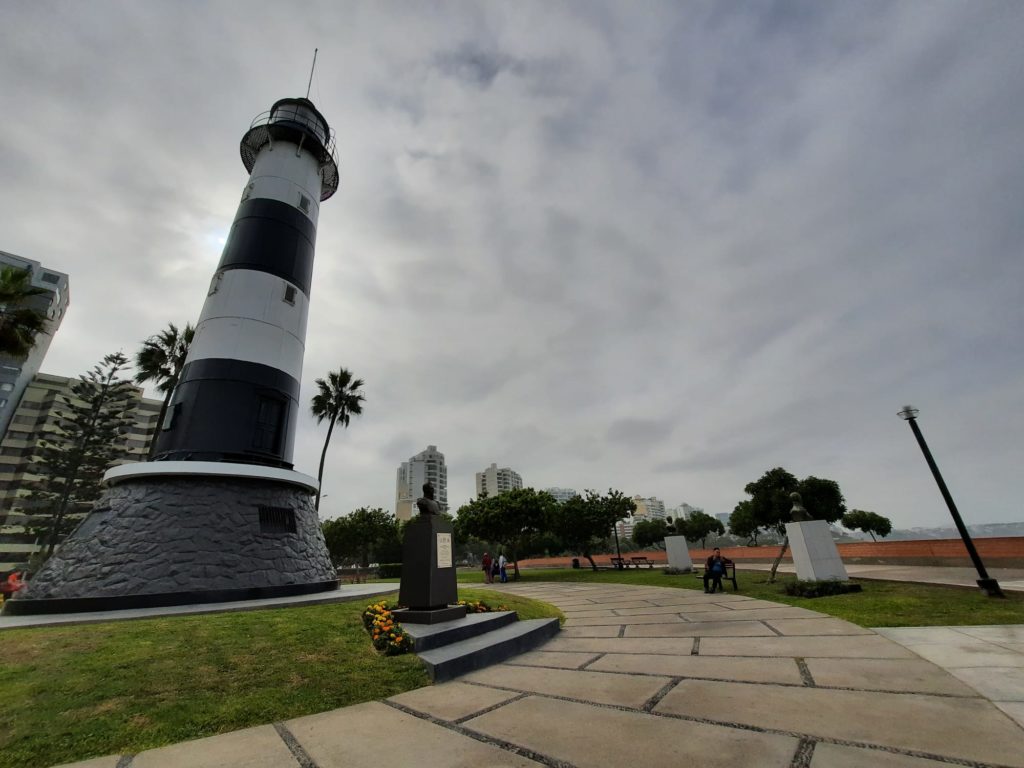
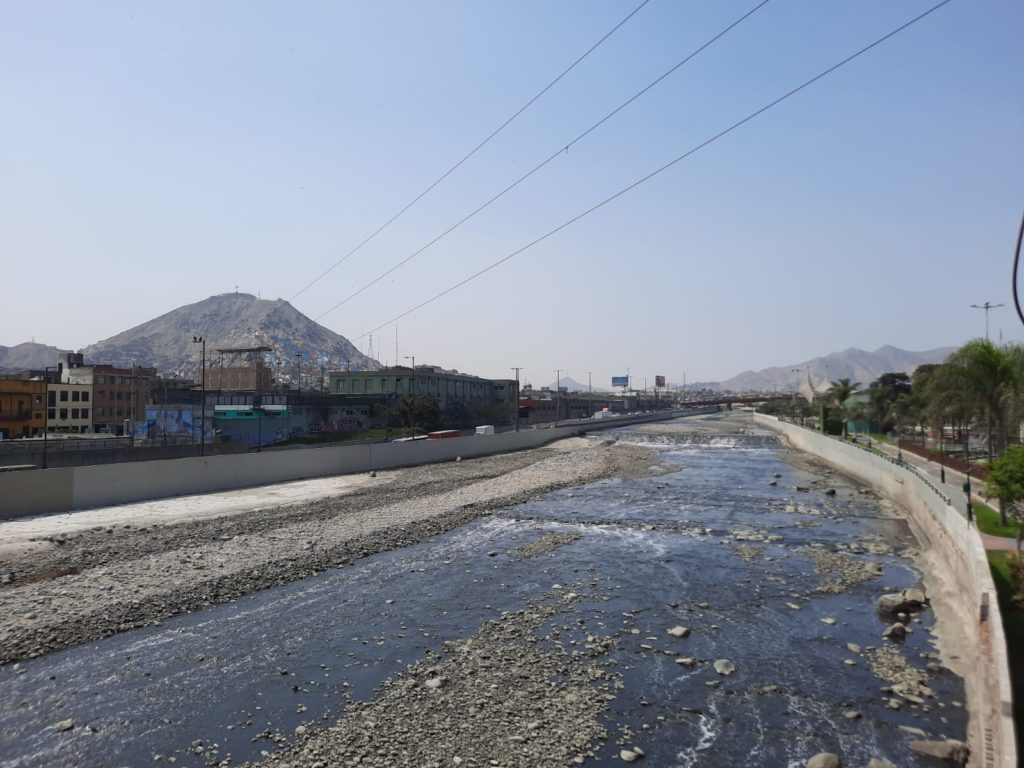
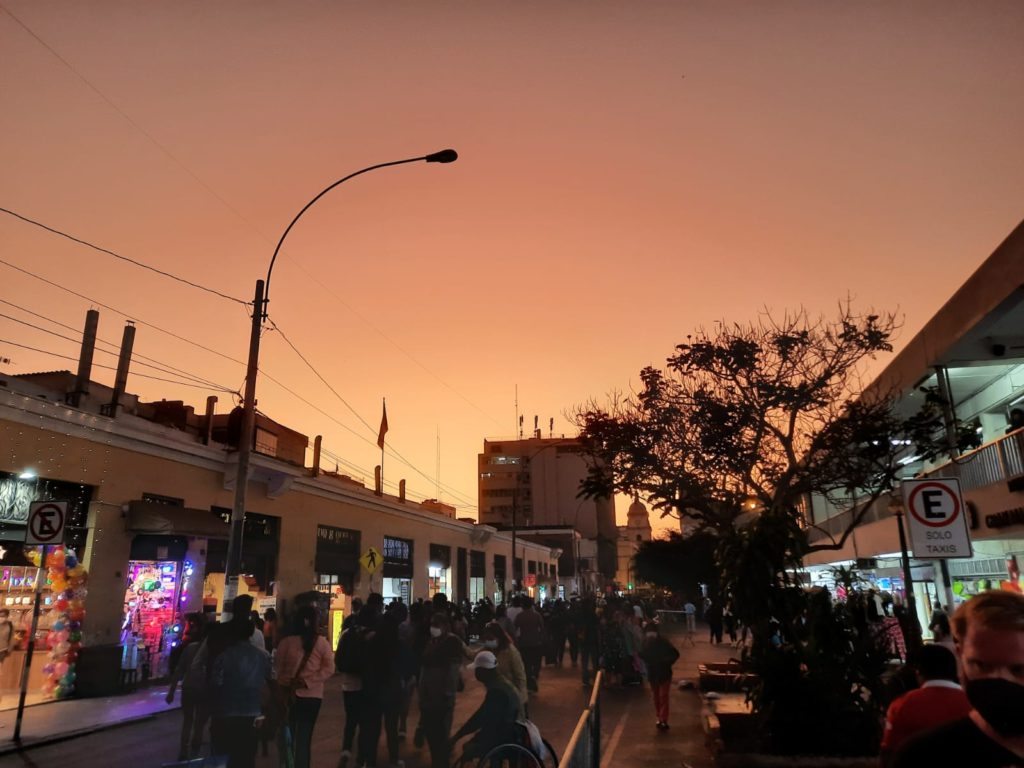
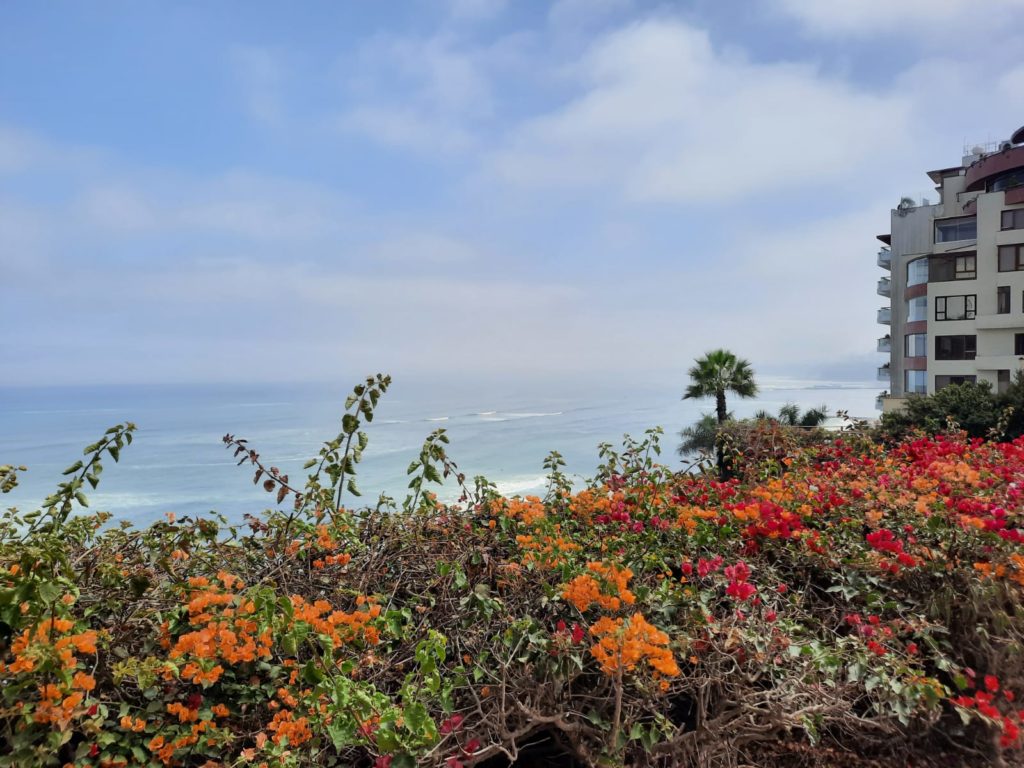
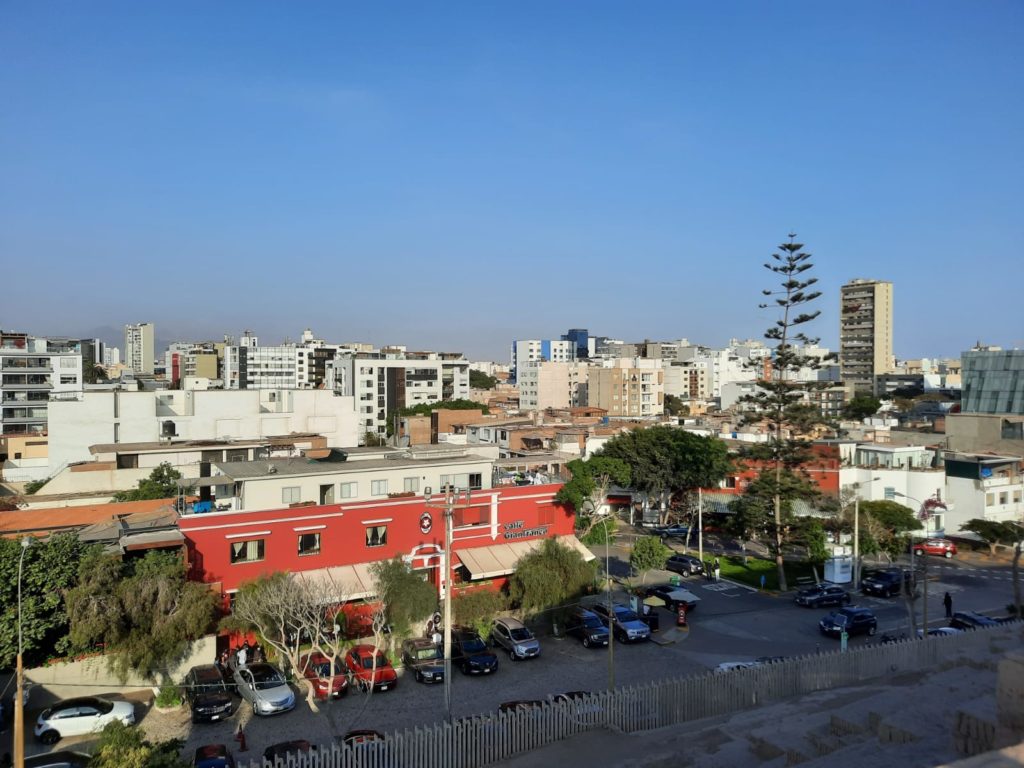
Getting Started In Lima
So a few pointers first of all. As a tourist, your hotel will most likely be in Miraflores. This is a relatively short distance from the airport, but I would advise arranging a ride in advance. There are some definite tourist scams for those who wait to figure things out at the airport.
Unless you have a significant amount of time in Lima or some specific sights you want to see, you probably won’t stray outside of Miraflores, the Centro Historico, and Barranco. Between these three districts you get a pretty good overview. The colonial city built on top of an earlier Inca settlement; artsy Barranco which was once a seaside retreat for the rich; and affluent Miraflores where you can easily find shops, cafes and restaurants.
I’m going to take you through a few general themes below, before circling back to the various districts. Hopefully this will give you a good sense of what to see and where you can find it!
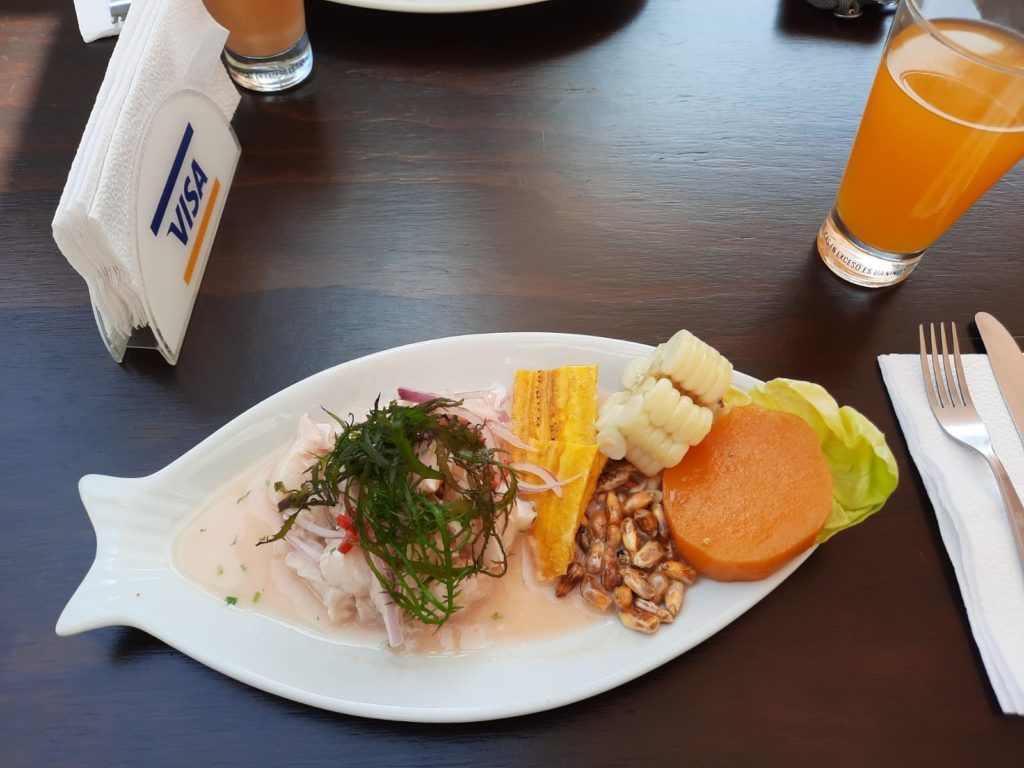
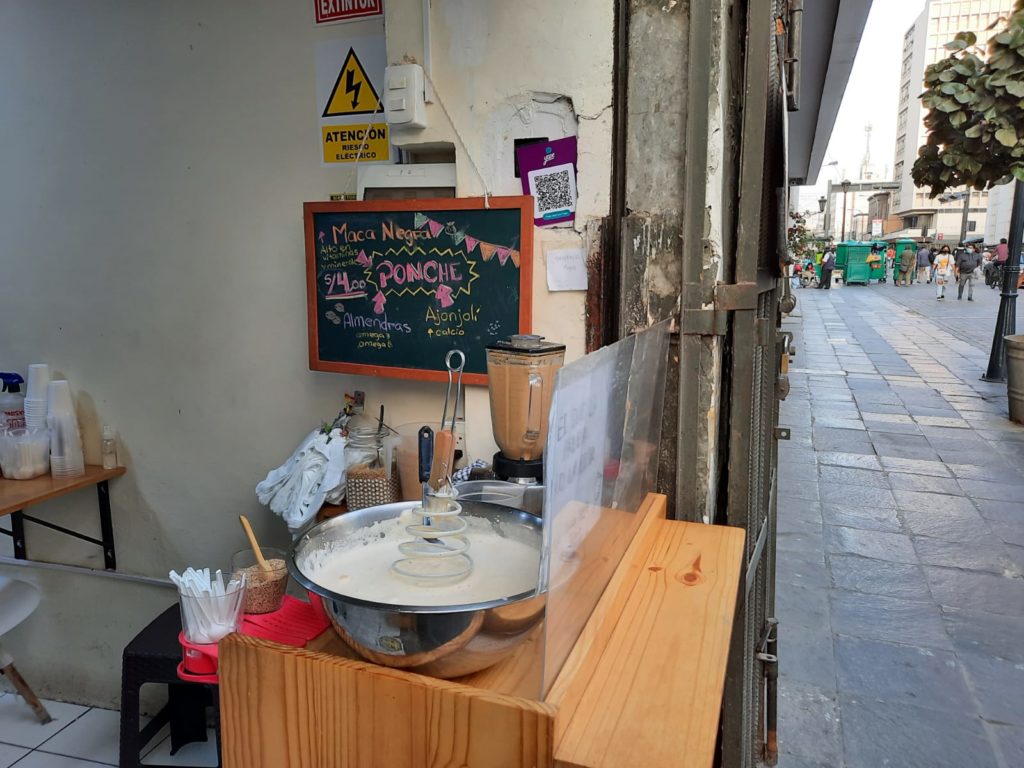
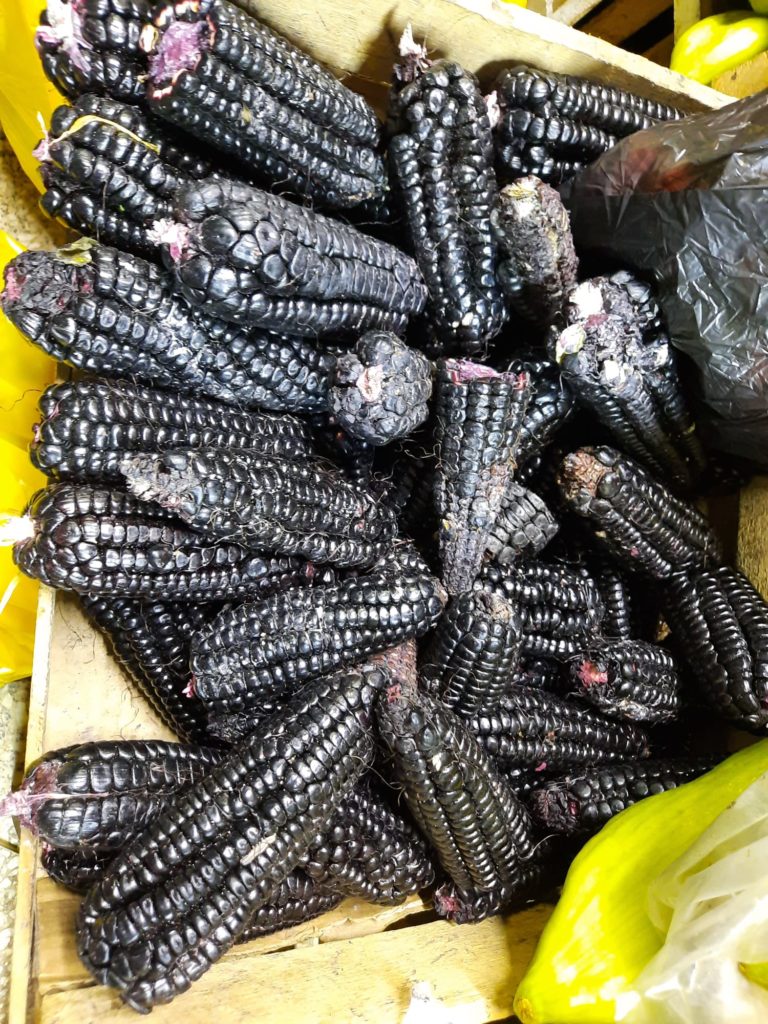

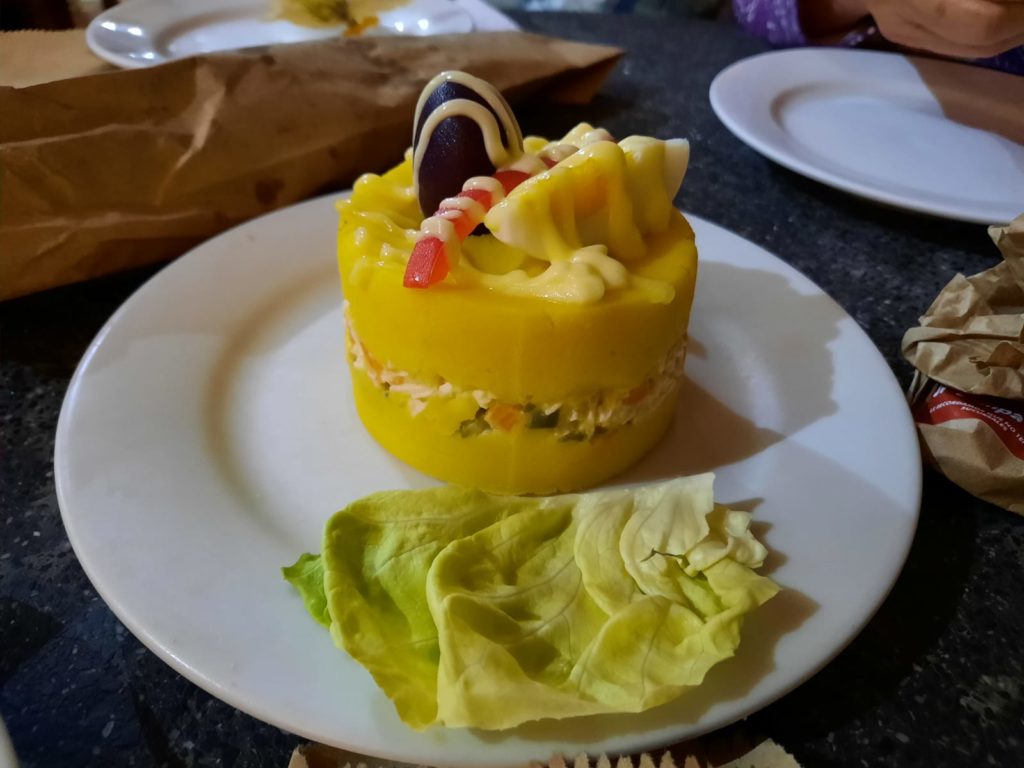
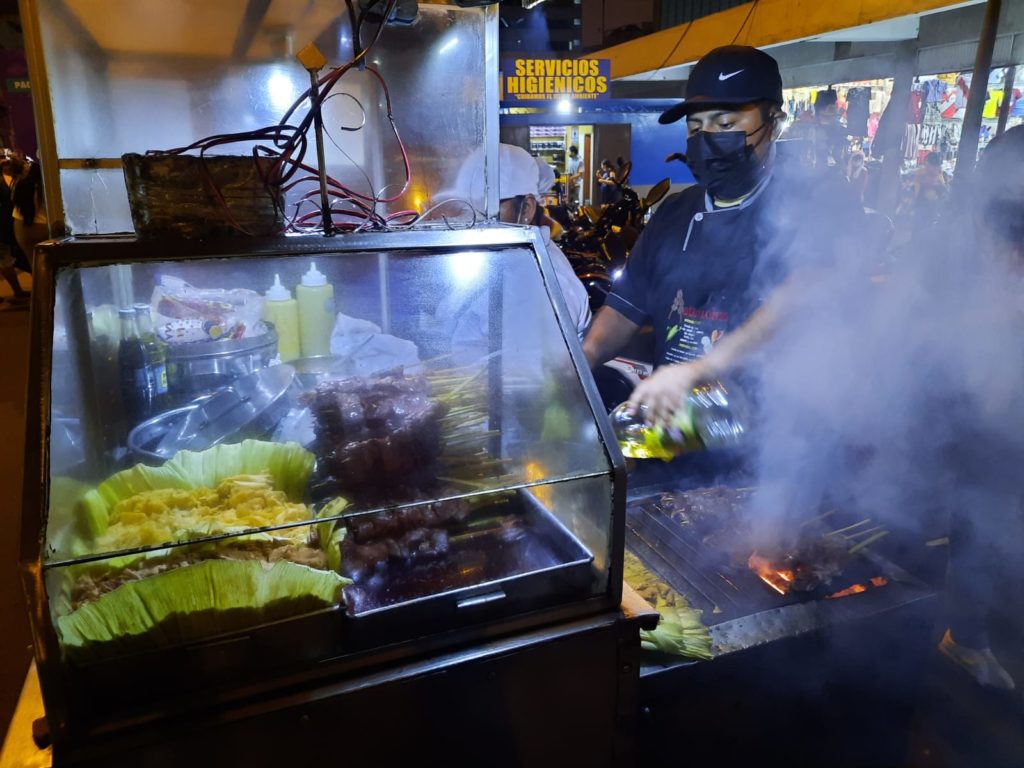
Food And Drink
Let’s start with Lima as a culinary capital then, shall we? There is certainly a lot of great food to try. I got started early, and spent my first evening in Lima on a Street Food and Old Taverns Tour. It was a great way to figure out where to eat and what to eat; see the local market; try different dishes including tropical fruits; and to get to know the city as well. Highly recommended!
And there are many dishes to try! Peru is a varied country, and you can find dishes from all over in the capital. There are dishes specific to Lima like the potato-based causa, and fresh ceviche using the abundant local seafood. You can try dishes from the Amazon, street food including anticuchos (beef heart skewers), and produce from the Andean highlands. And to wash it all down, there’s the favourite national cocktail pisco sour. Or chicha morada, a sweet, non-alcoholic drink made from purple corn. Peru does produce some wines, but in my opinion you’d be better off trying other local drinks.
An interesting fusion in Peru which you will have plenty of time to try in Lima is ‘chifa’. This is the local word for Chinese food/restaurants. Immigrants from China (mostly Canton) first came to Peru in the 1850s as indentured labourers under terrible conditions. Many stayed, and their food proved a hit with locals; to the extent that Peruvians use words based in Cantonese rather than Spanish for some staple ingredients (eg. ginger = kion, not jengibre). I tried chifa a couple of times, and can recommend it. I had great (and gigantic) siu mai in Chinatown, and chaufa (fried rice) somewhere in Barranco.
Salterton Arts Review’s Pick: El Cordano near the Plaza de Armas. This friendly bar/cafe has an early 20th century interior, and excellent food and drink options. I first came for a ceviche lunch, and kept coming back here for the vintage vibes.
Bar Cordano – Wikipedia, la enciclopedia libre
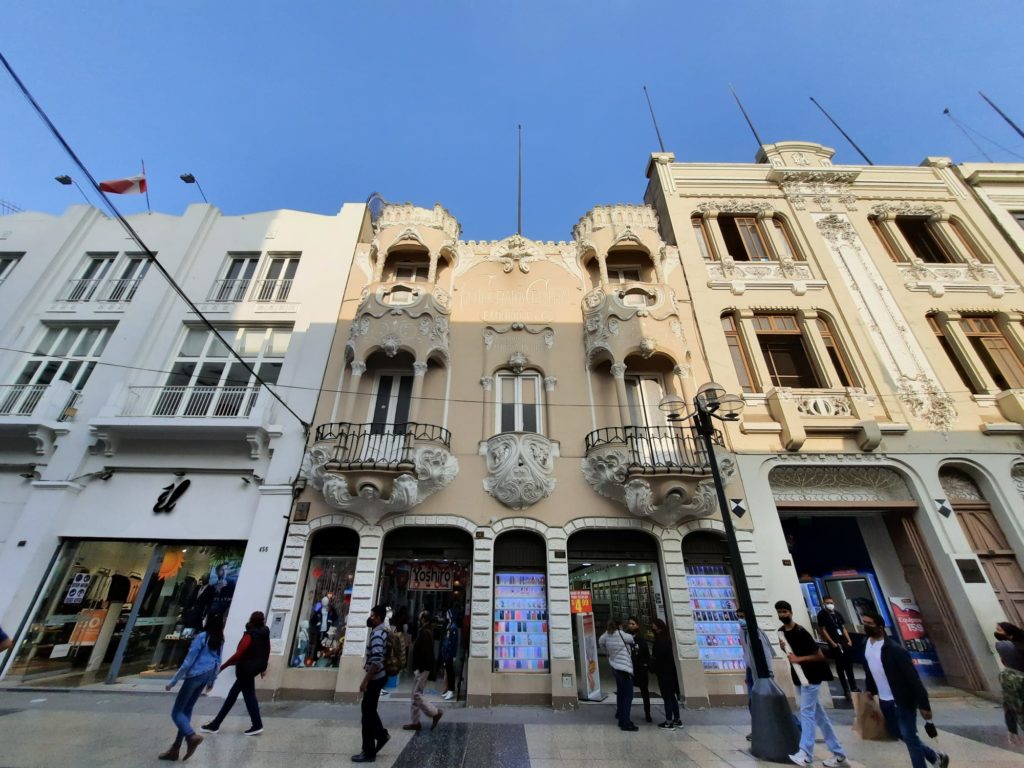
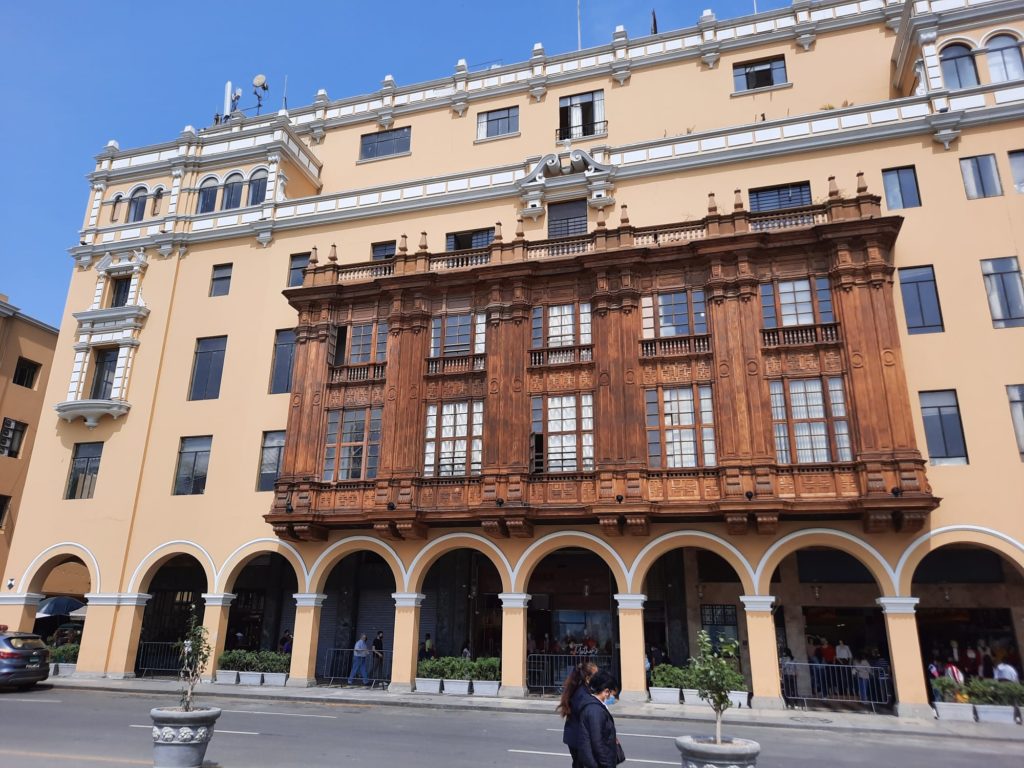
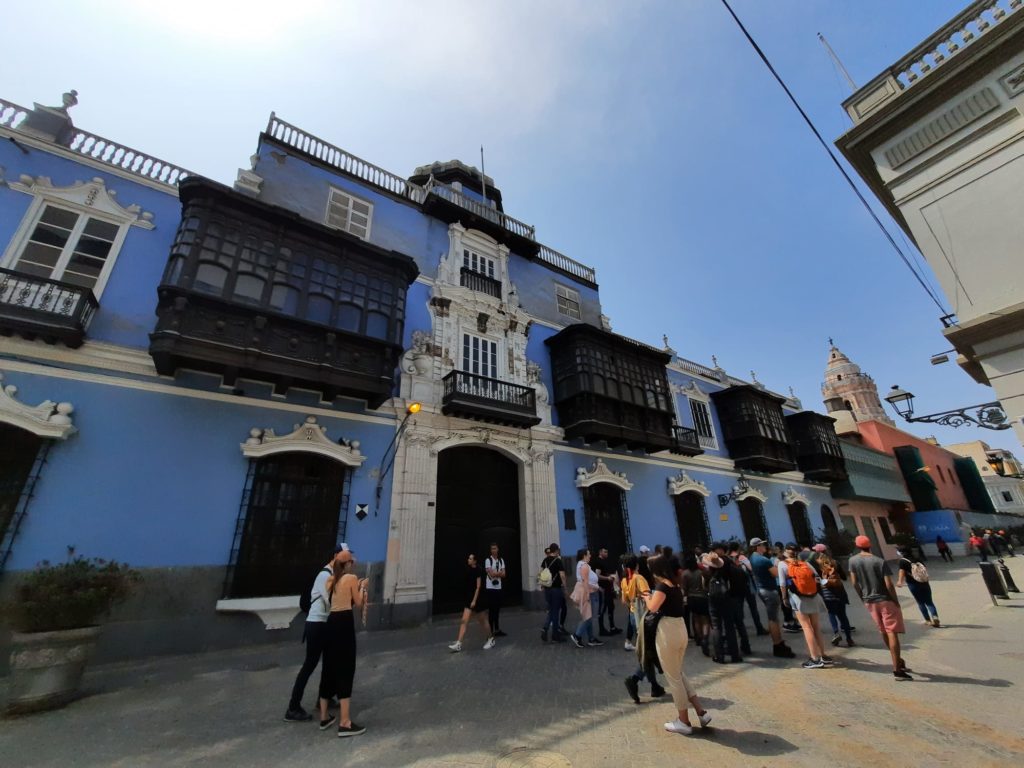
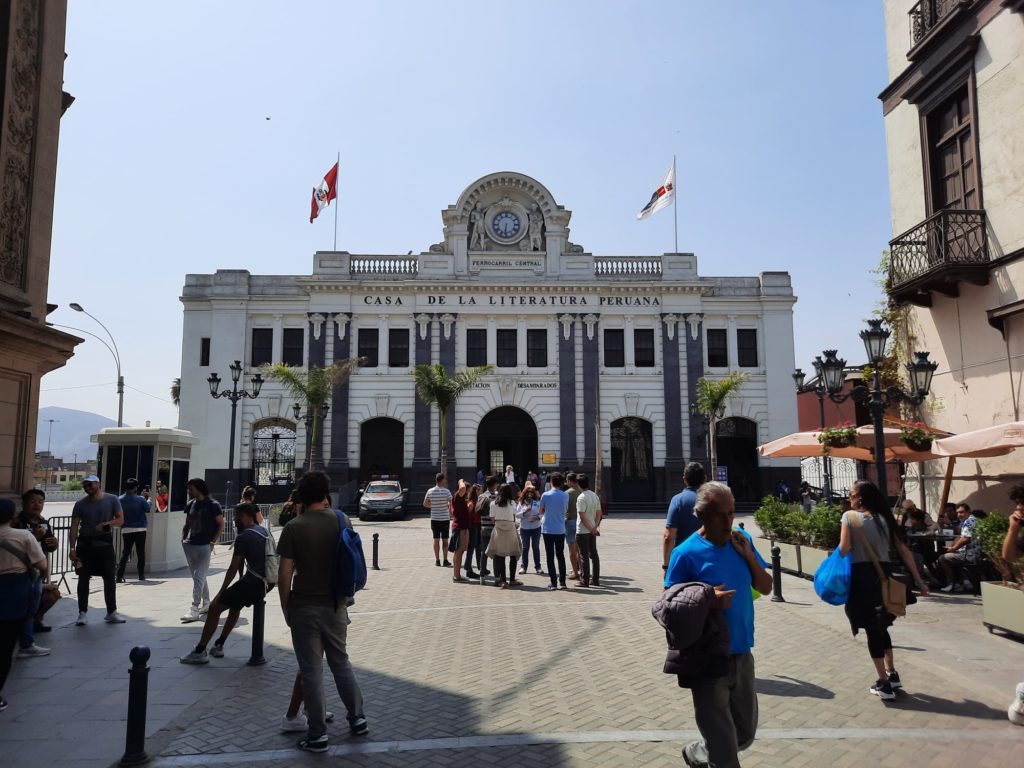
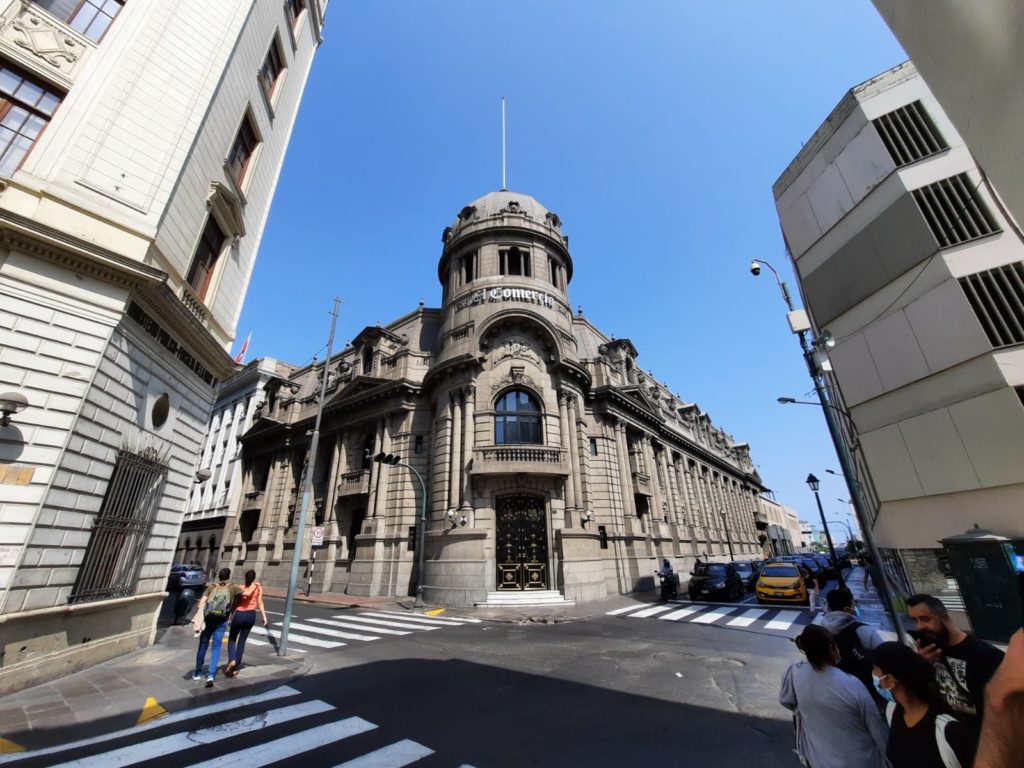
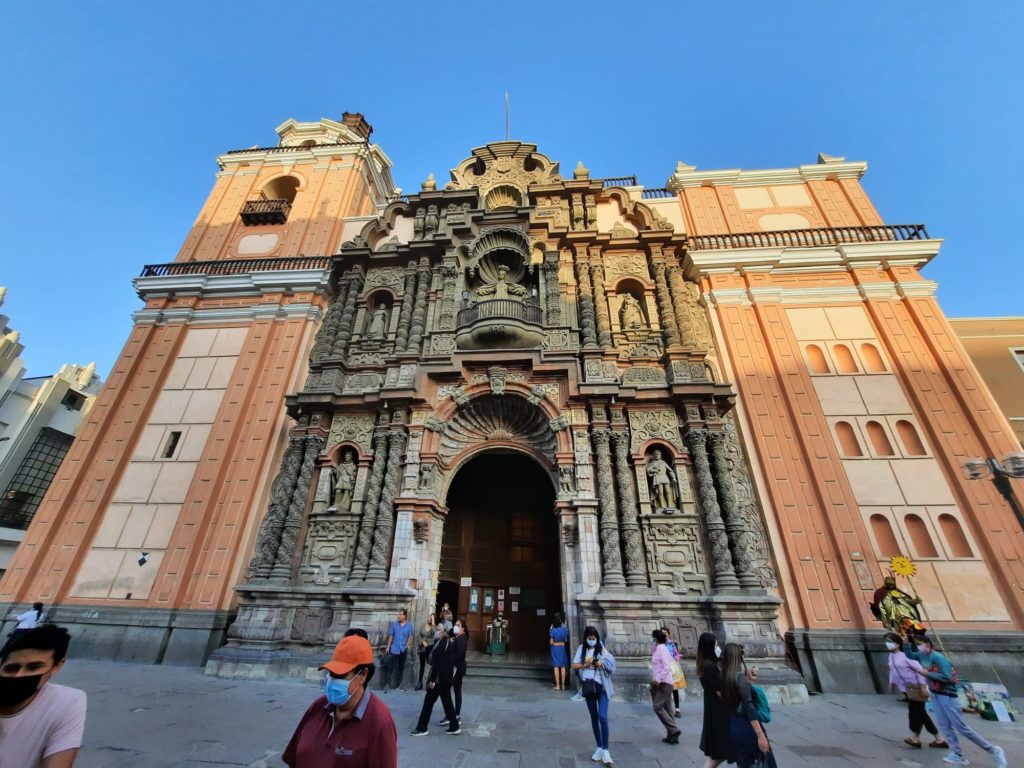
Architecture
If architecture is your thing, there’s a lot of variety in Lima. The city’s history falls roughly into three periods: pre-Columbian (which is a big chunk of time and covers many different civilisations); colonial/Vice Regency; and independence. Each is still visible in the city’s fabric to some extent, although when thinking about the earliest period it’s important to remember that Lima was not the capital until the Spanish came and needed access to a port as a maritime link back home and for trade. Lima was a typical walled city to begin with, and has increased its size exponentially in the last century. Although, as I mentioned previously, you won’t see most of the districts of Lima unless you have some specific interest.
So unlike Cusco, Lima does not wear its pre-Columbian heart on its sleeve. There are structures around which are pre-Inca in origin (and then often taken over by the Incas); you can read about those here. Experiencing early Lima is often about understanding and visualising what used to lie beneath the current colonial or later buildings (eg. an Inca temple that was razed to make room for the cathedral – the Spanish were big on that sort of symbolism).
What is particularly interesting about colonial Lima is the transfer of architectural styles across space and time. There is plenty of Baroque influence in the city, for instance – very European. But then there are the wooden balconies. A Moorish style, transmitted from Africa to Spain, and then from Spain to Peru. You can spot earlier vs. later ones because the later ones have glass windows.
In terms of more recent architecture, there’s plenty of Neo-Classical buildings around. Plus a few standout Art Nouveau buildings and the odd bit of Art Deco. In Barranco (see below) you can see seaside retreats of the city’s rich residents, in the Beaux Arts style.
It’s an alluring blend of periods and styles so just wander, soak it up, and enjoy.
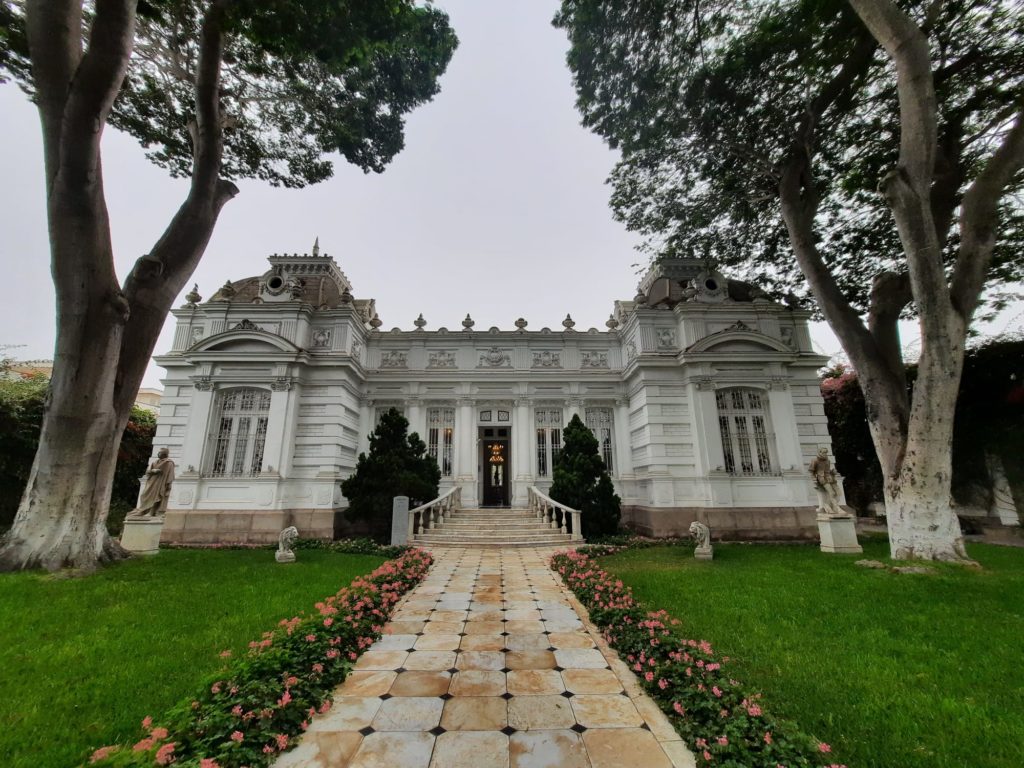
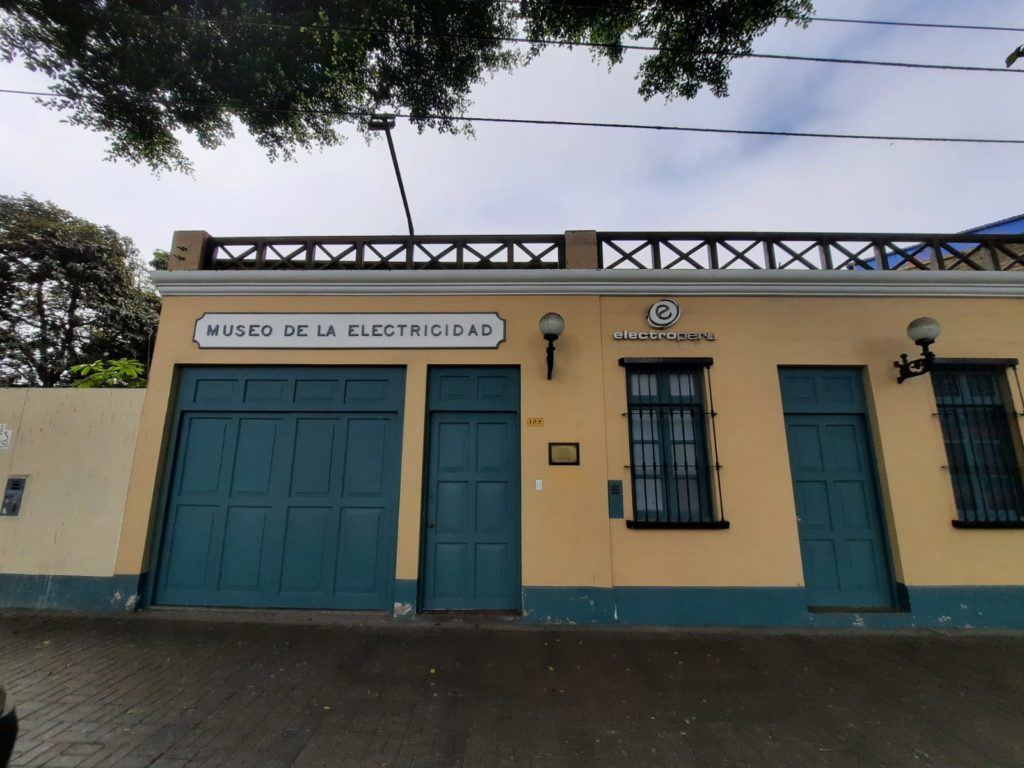
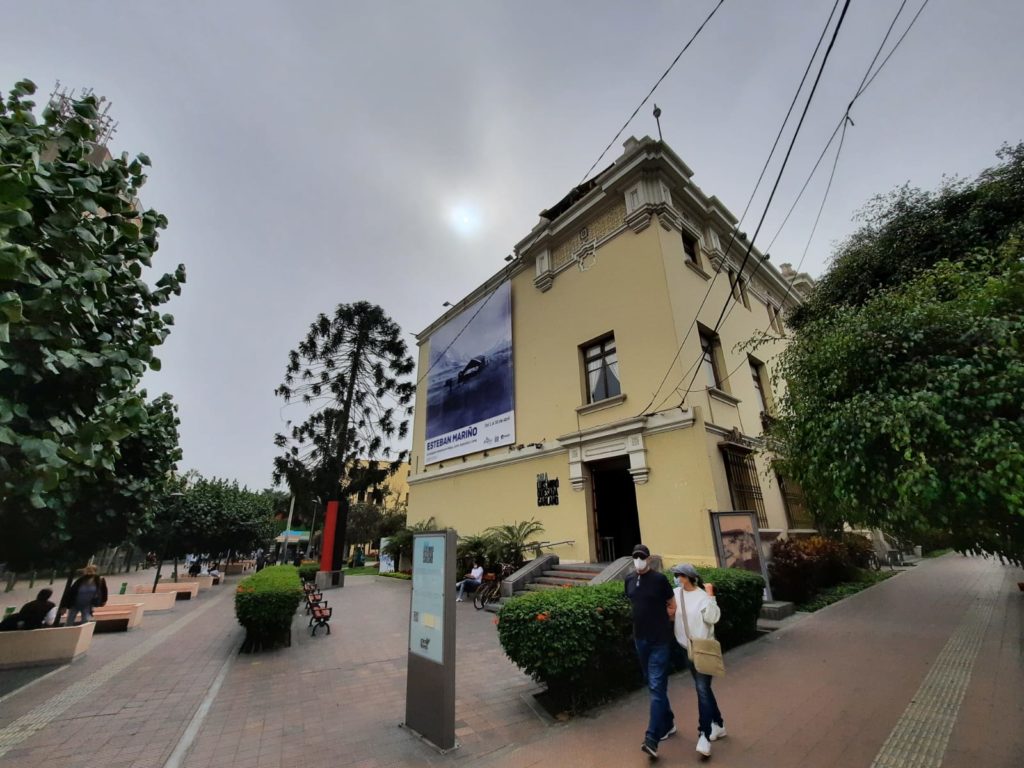
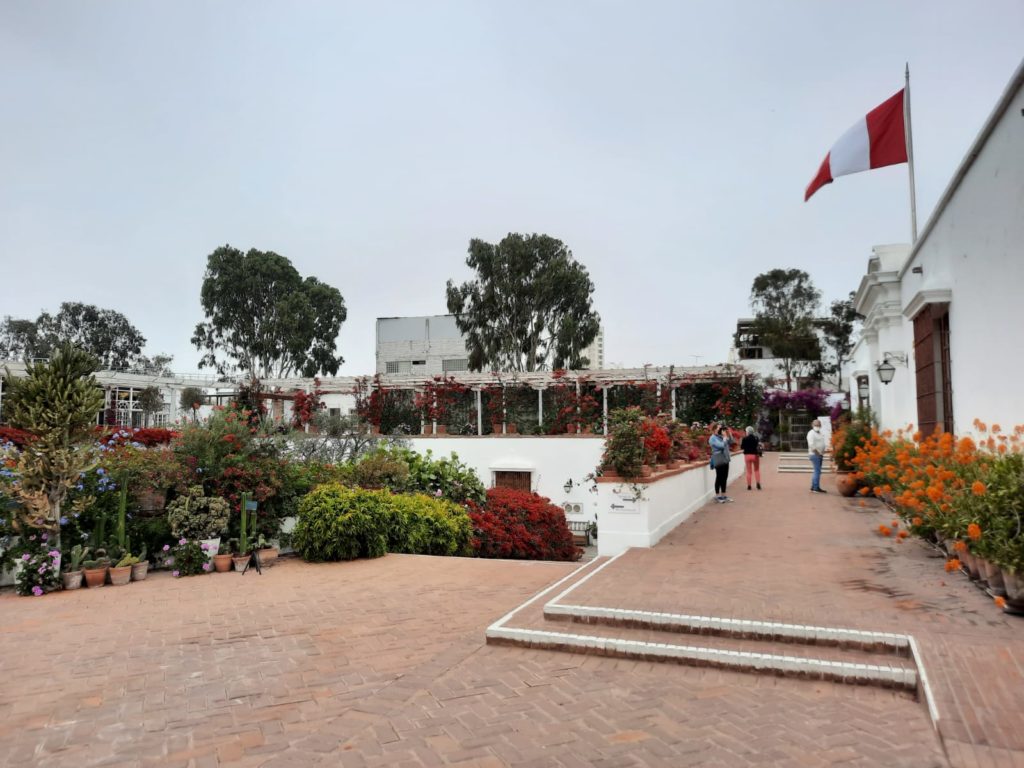
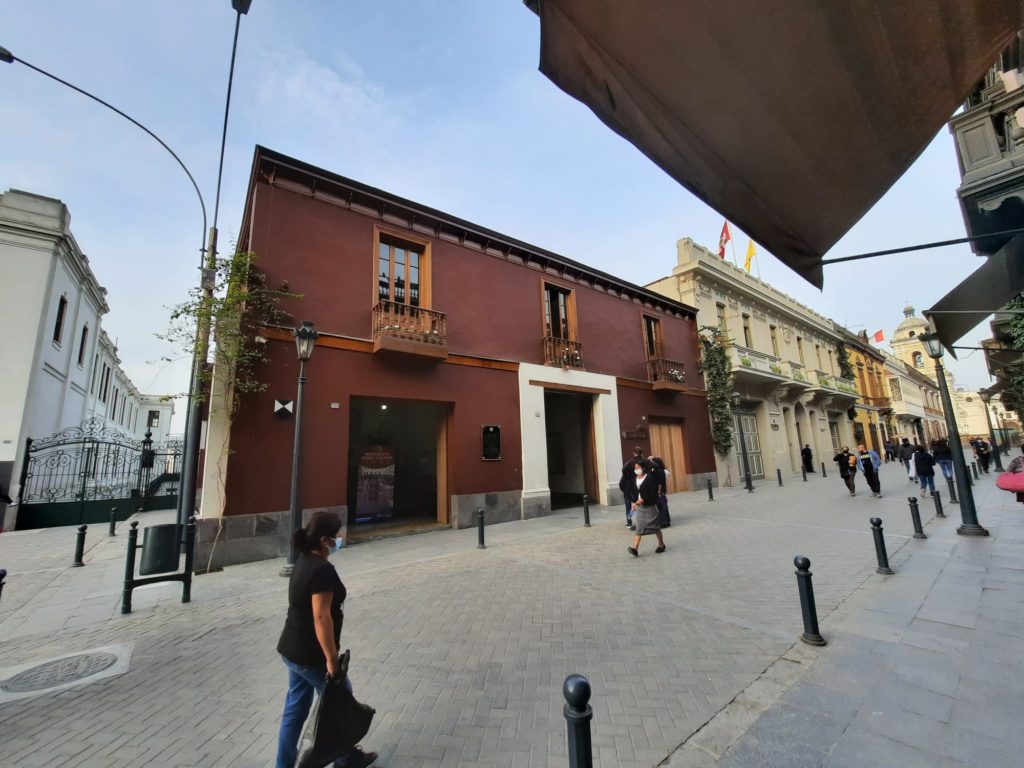
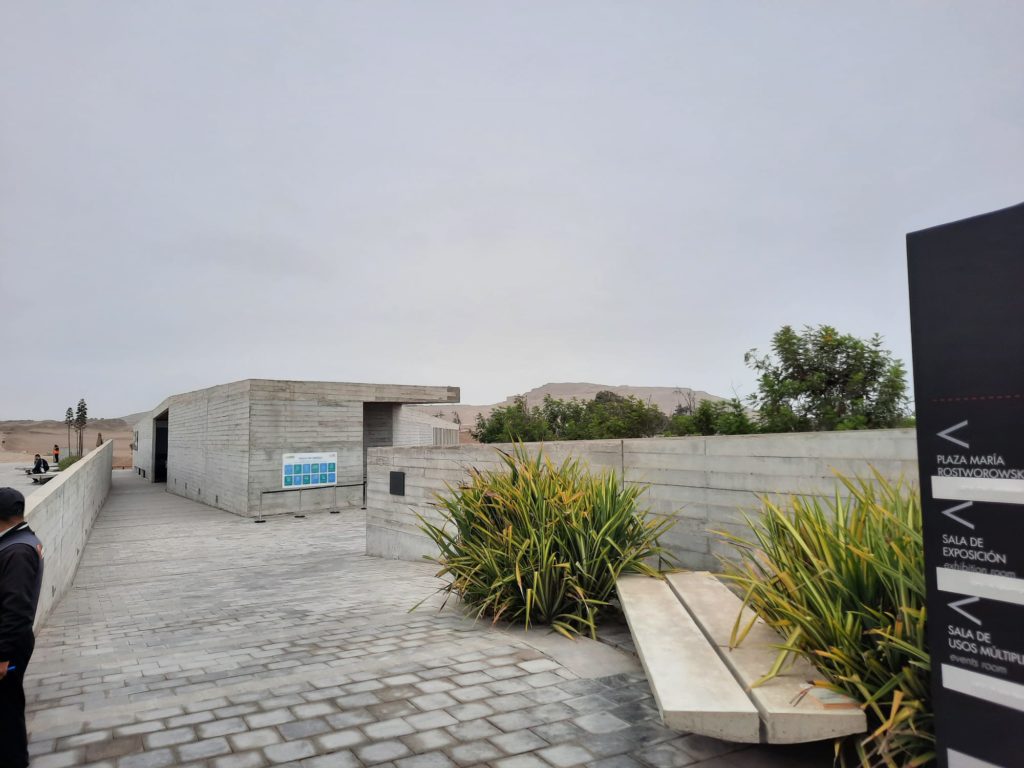
Museums
Like any major city, there are plenty of museums to enjoy in Lima. However, a note first: the city’s museum scene seems to be in flux, mostly due to Covid (I visited in May 2022). Not everywhere has reopened yet, and some museums you will spot in guidebooks, for example the Museo Mario Testino/MATE, have permanently closed (MATE is now online only). Sometimes I noticed the information on the Spanish versions of websites was more up to date than the English – Google Maps seems to be quite reliable for open/closed status if you don’t speak Spanish.
Some of Peru’s big hitters in terms of museums are the Museo Larco (open), Museo Amano (closed but reopening soon) and Museo Nacional de Arqueología Antropología e Historia del Perú (closed for renovations). I was particular disappointed about the Museo Amano, which is devoted to pre-Columbian textiles and was only 5 minutes from my hotel. But I made it to the Museo Larco, which is an impressive space for historic ceramics, scultures and other artefacts. Both the Larco and Amano museums grew out of private collections, as did the Museo Pedro de Osma in Barranco – this seems to be a theme and probably points to historic wealth disparity and a gap where the early Peruvian government was unwilling or unable to focus on niceties like museums and heritage preservation.
There are plenty of smaller museums too, some of them free like the centrally-located Museo de Sitio Bodega y Quadra (an excavated colonial mansion). The Sala Luis Miro Quesada Garland in Miraflores is also free, and had an interesting exhibition of early photography when I visited. A number of these smaller museums are still closed, however, like the Museo de la Electricidad (Electricity Museum). Basically my advice is to do your research to find out what you’re interested in, check opening hours to the best of your ability, and have a back up plan!
Salterton Arts Review’s Pick: MUCEN. The Museo Central, Banco Central de Reserva del Perú is in the former Central Bank building, but the collection has nothing to do with the building’s former function. Instead, it’s a nice capsule collection of pre-Columbian artefacts, folk art and paintings. It’s a good size to visit without being exhausting, plus the tellers’ windows are still in place. And the gold artefacts are kept in the vault!
Book advance tickets at Museo Central (bcrp.gob.pe)
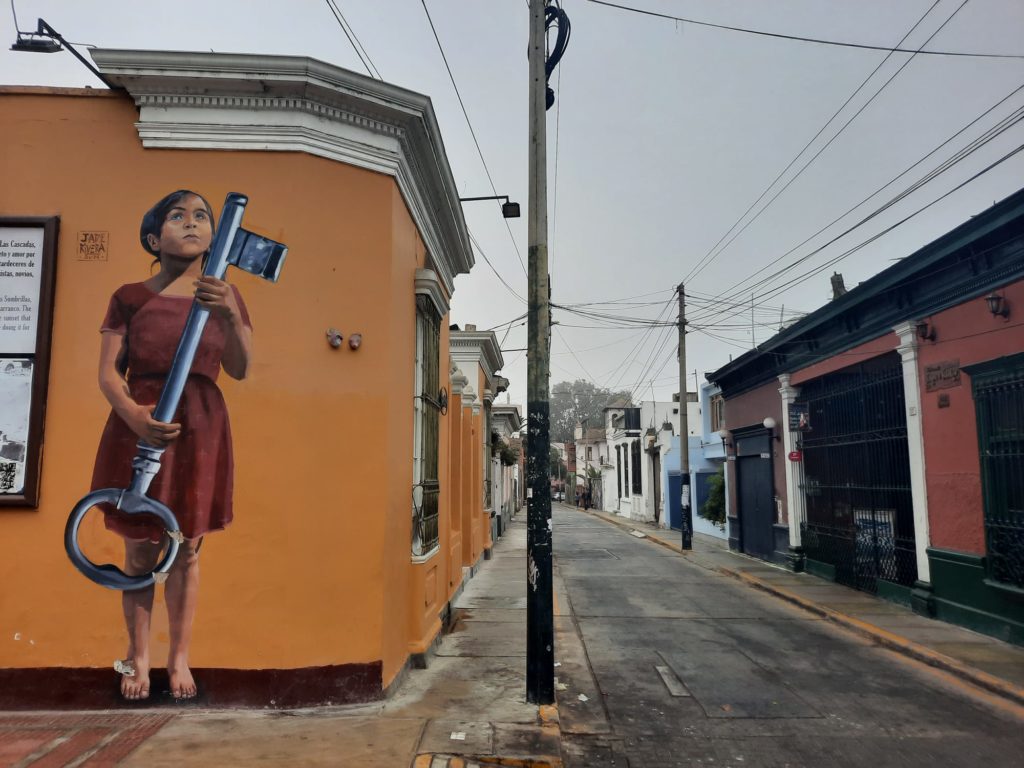
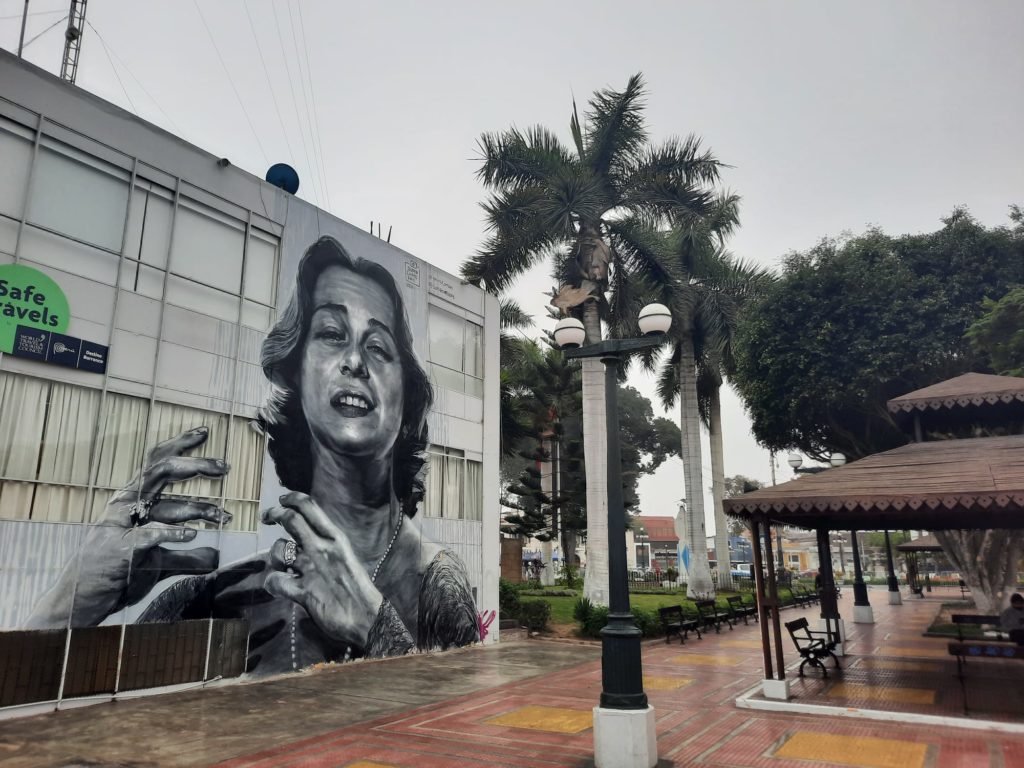
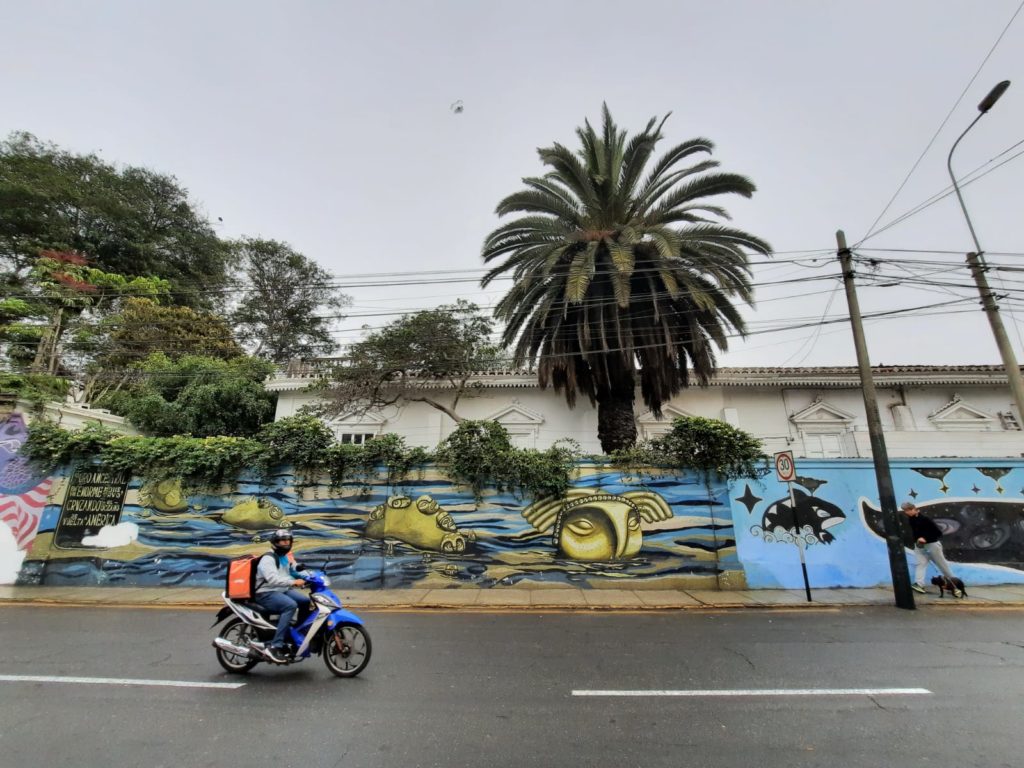
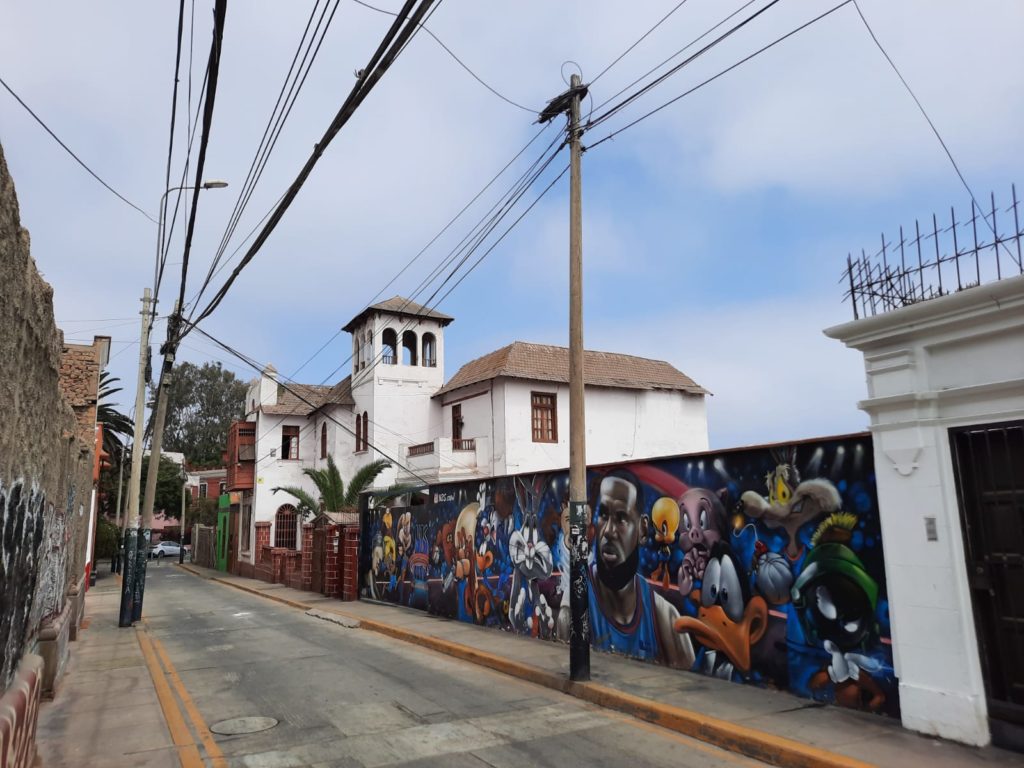
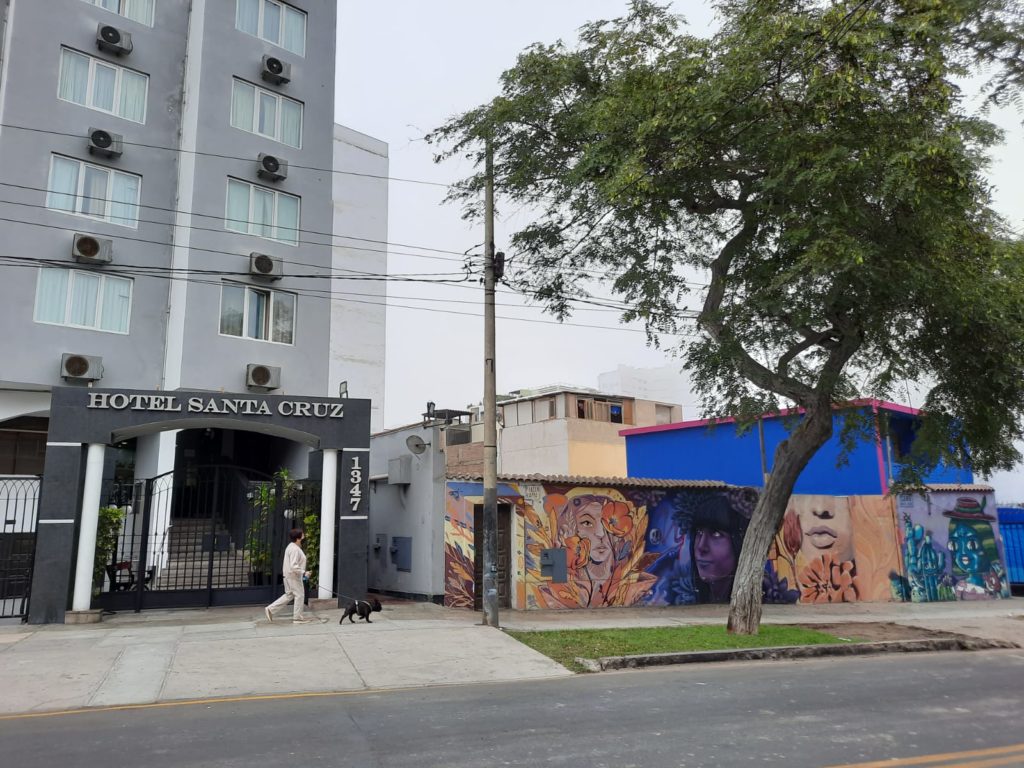
Street Art
Lima is not a street art destination in the way that Lisbon or East London are. But as you explore, keep an eye out for murals. Some of them are strangely commercial (the 2021 version of Space Jam, anyone?), others give more of a local flavour. Artsy Barranco is particularly good for interesting public art.
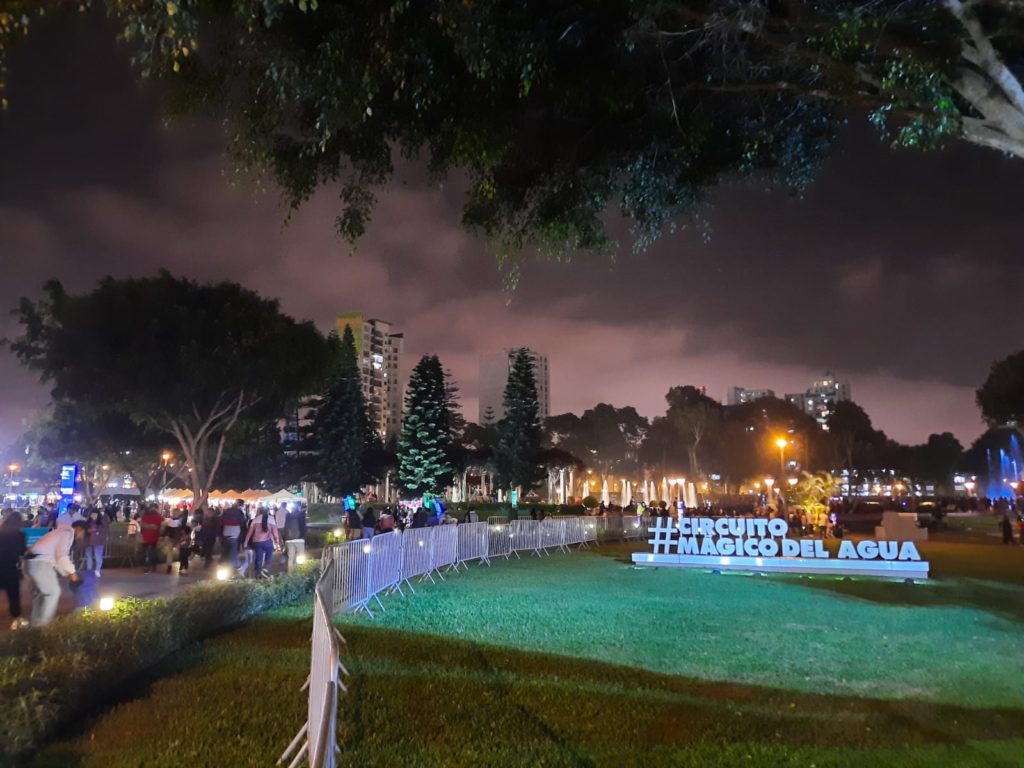
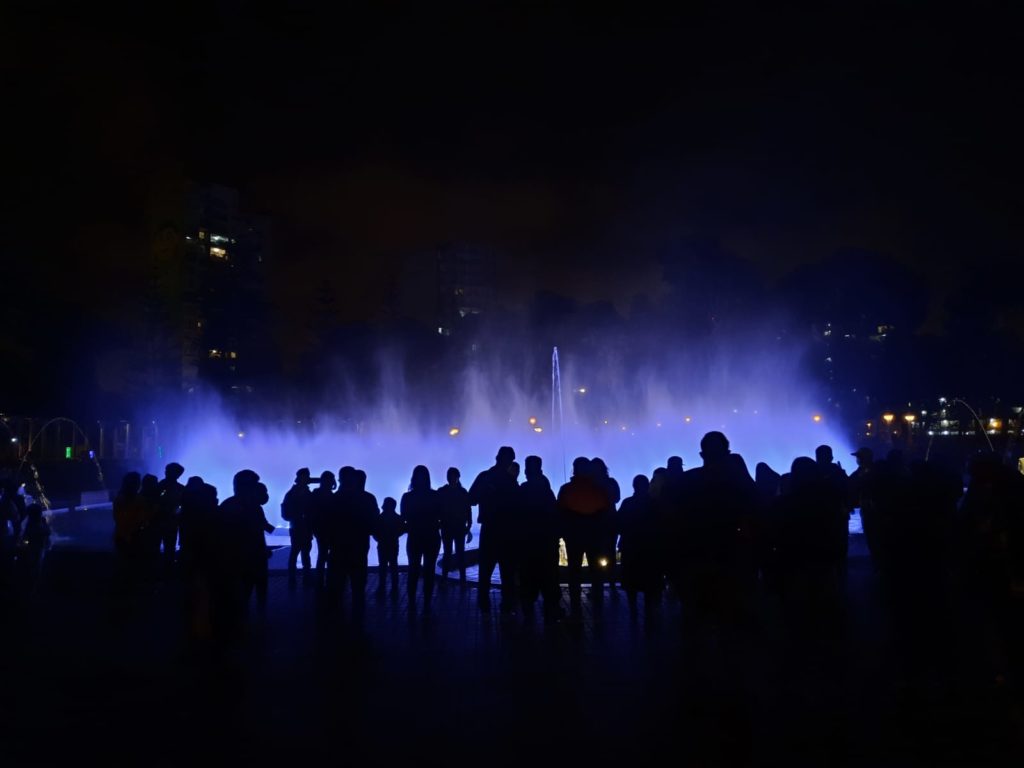
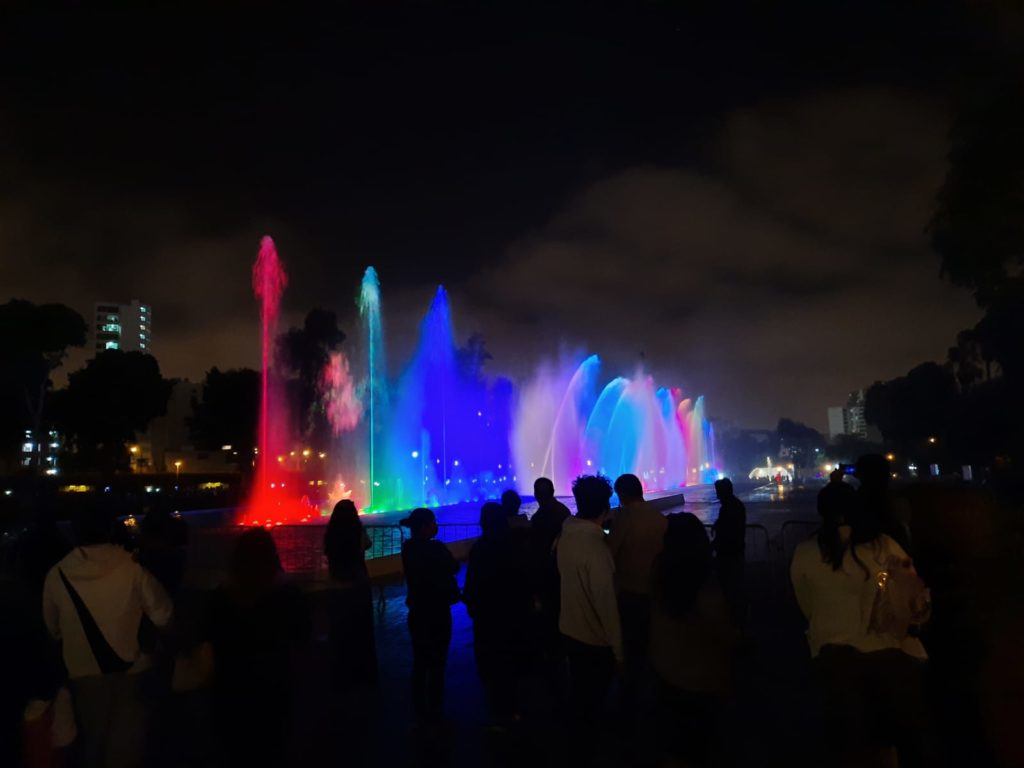
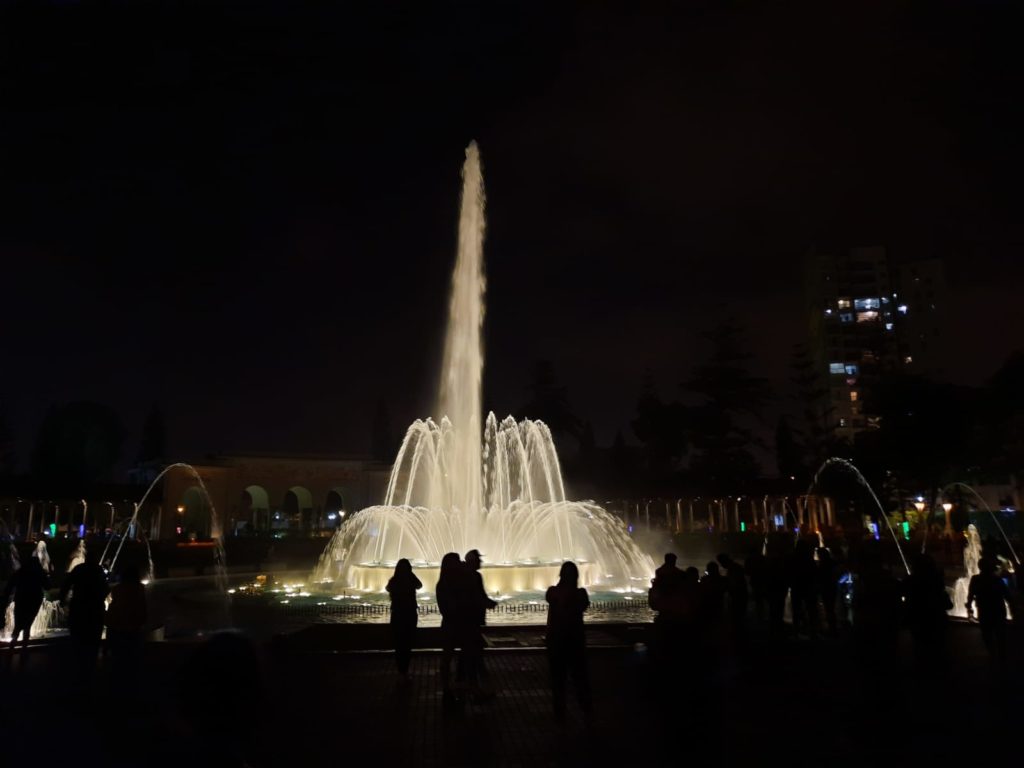
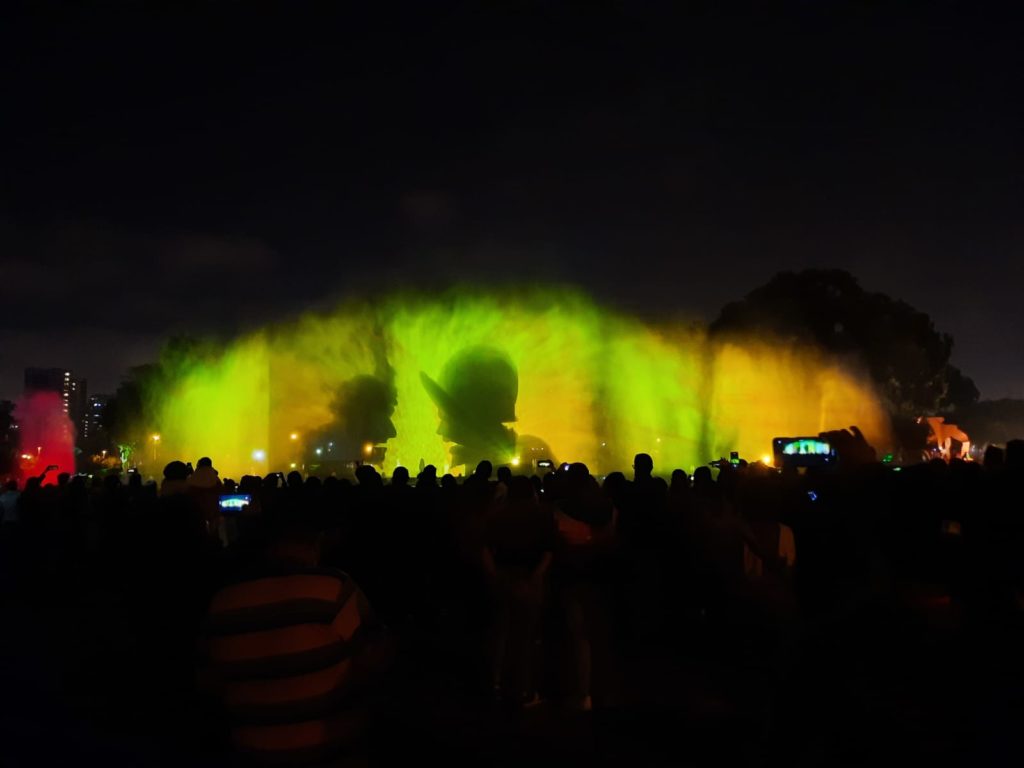
Circuito Magico Del Agua
Ok this is a fun one. I went to the Circuito Magico del Agua one evening on a whim, and I’m glad I did. The ‘Magic Water Circuit’ is a park with a series of fountains, with nightly shows. What I particularly enjoyed is that this is something that Peruvians do – entry is only about £1, and most of the visitors are local.
It’s really good fun! There’s one main fountain that does a proper sound and light show, and a series of smaller fountains that do colours and shapes. You can get a little train that takes you around them all, or just wander at your own pace. There are plenty of people selling churros: I found Peruvian churros very tasty so could be worth a try if you’re peckish.
Everything happens in Spanish at the Circuito Magico del Agua, but luckily fountains are pretty self explanatory! There’s a one way system where you will exit somewhere different than where you came in. Again Uber is your friend here: I found arranging a ride back to my hotel pretty easy.
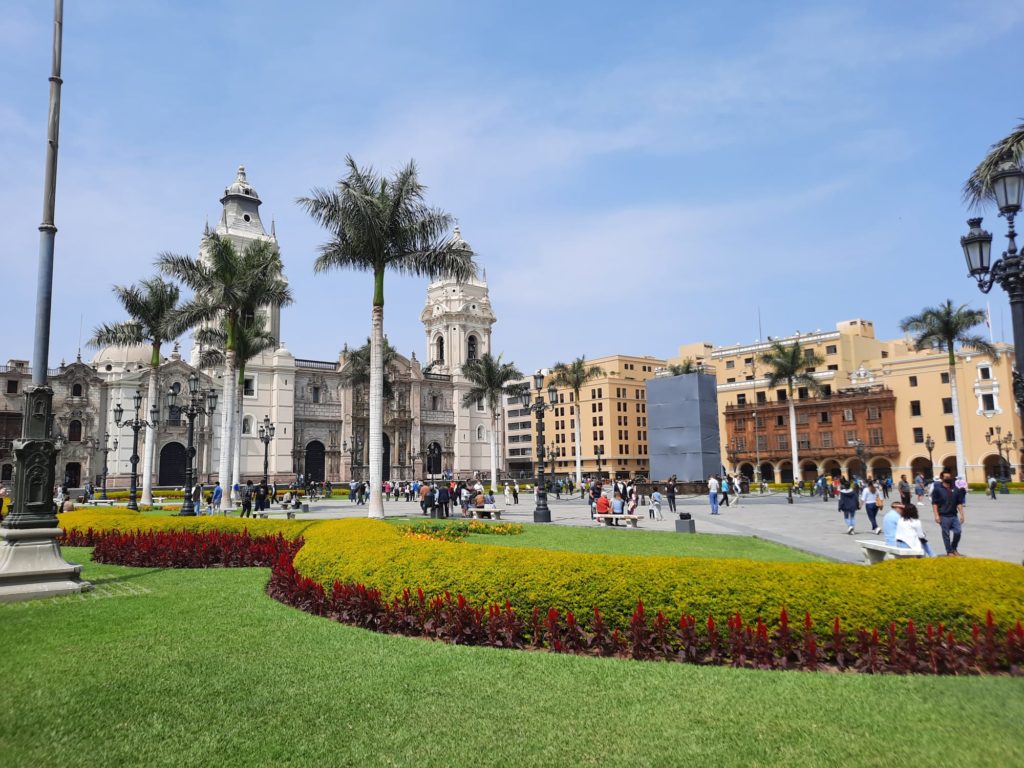
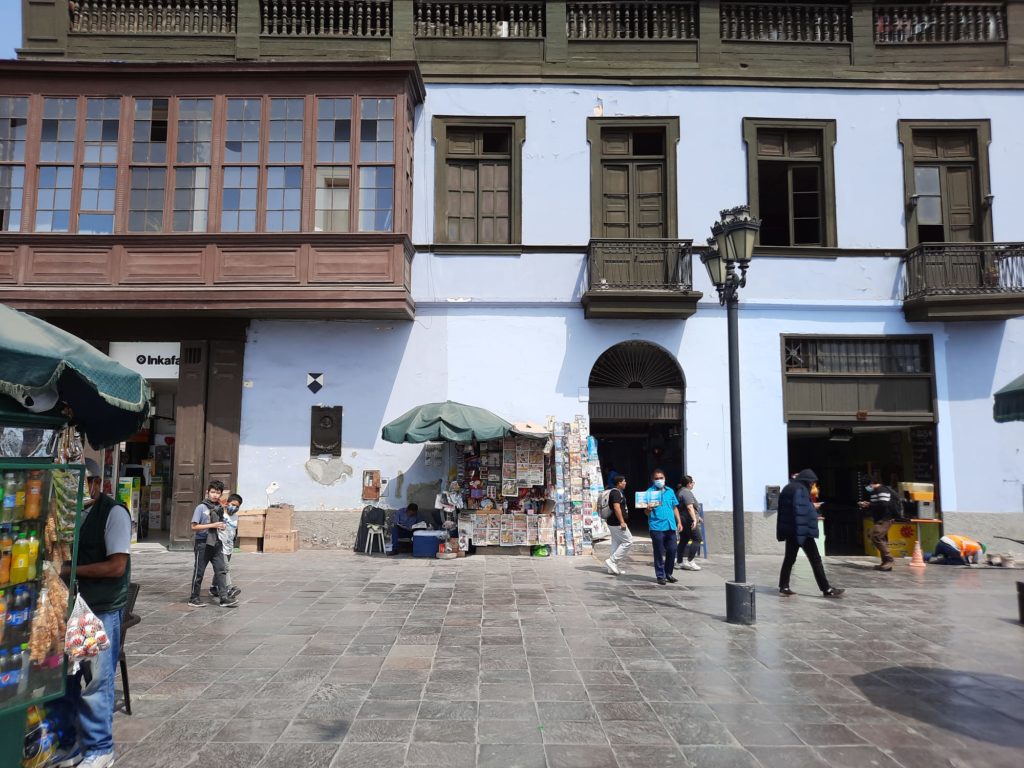
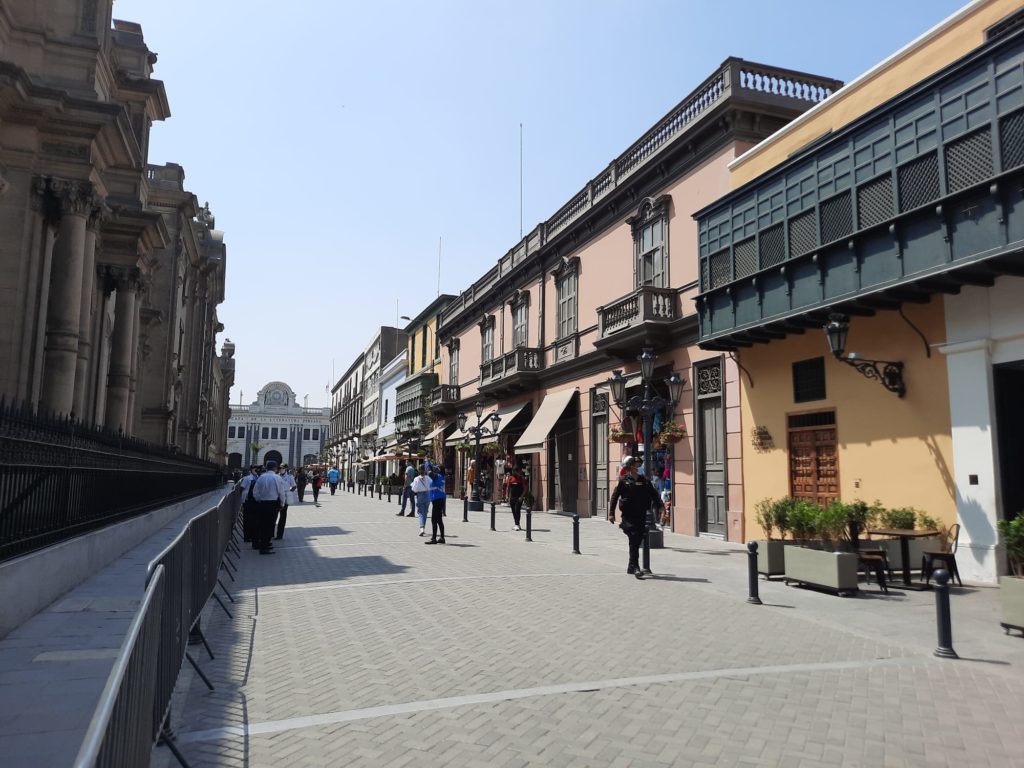
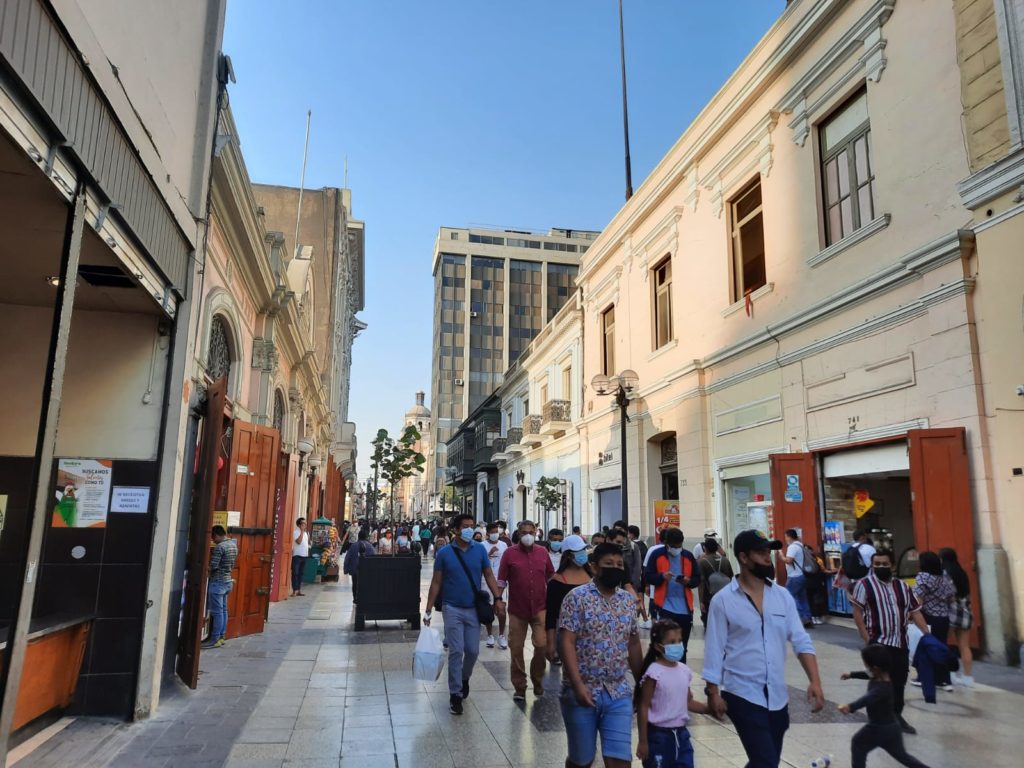
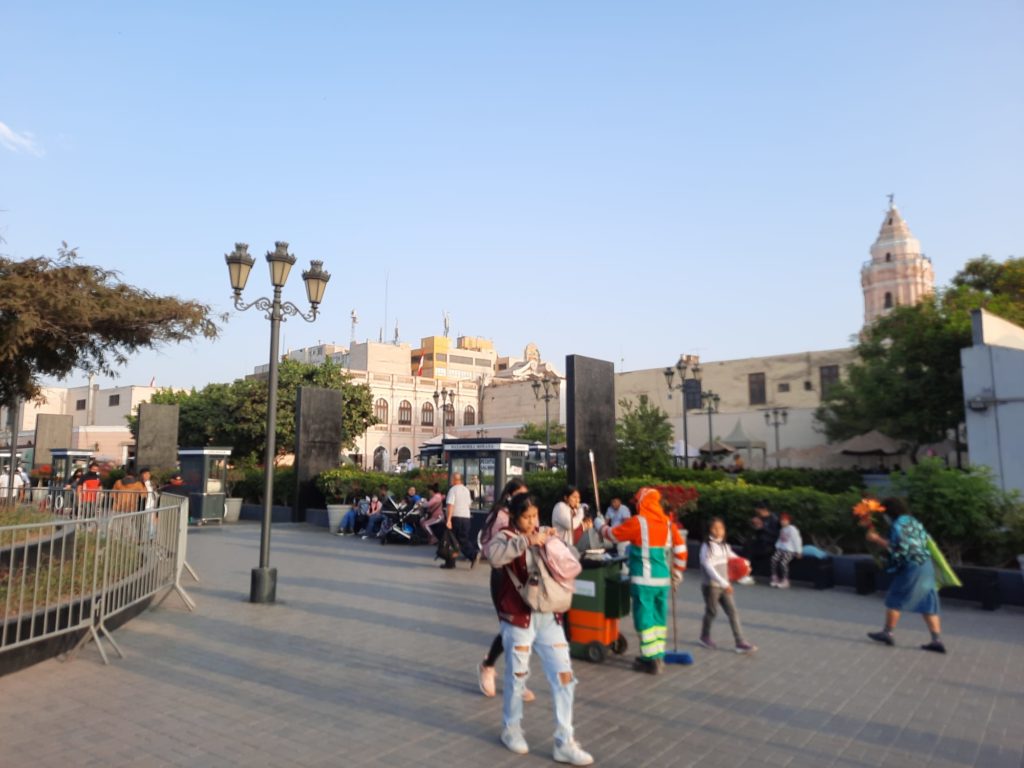

Centro Historico (Historic Centre)
Most of the historic sights are, naturally, in the Centro Historico of Lima. A good way to orient yourself, and one I tried myself, is to do a free walking tour. This will take in the Plaza de Armas which is the main square, plus many of the surrounding sites. Not much of Lima’s original city walls still stand, but there is a riverside park where you can see remnants of them. It’s also close to a park with impromptu musical performances and street food, so is a nice place to spend the early evening.
In terms of sights in the Centro Historico, all the main religious orders are represented with a big old church complex. You can see Dominicans, Franciscans, Jesuits and more. The churches in Lima are huge, and pretty impressive – if I found the massive carved altars overwhelming, I’m not surprised they made a big impression on the local population.
The bigger museums tend to be a little out of the centre, but you can find the Museo de Arte de Lima (MALI) in this area. I also visited the Museo de Sitio Bodega y Quadra, and Casa de Aliaga, both of which are centred on colonial houses.
In terms of food, you can find everything in the Centro Historico. From chains to street food to fine dining, this area has it all. It’s also the best area for souvenir shopping unless you want to head to one of the big markets in Miraflores.
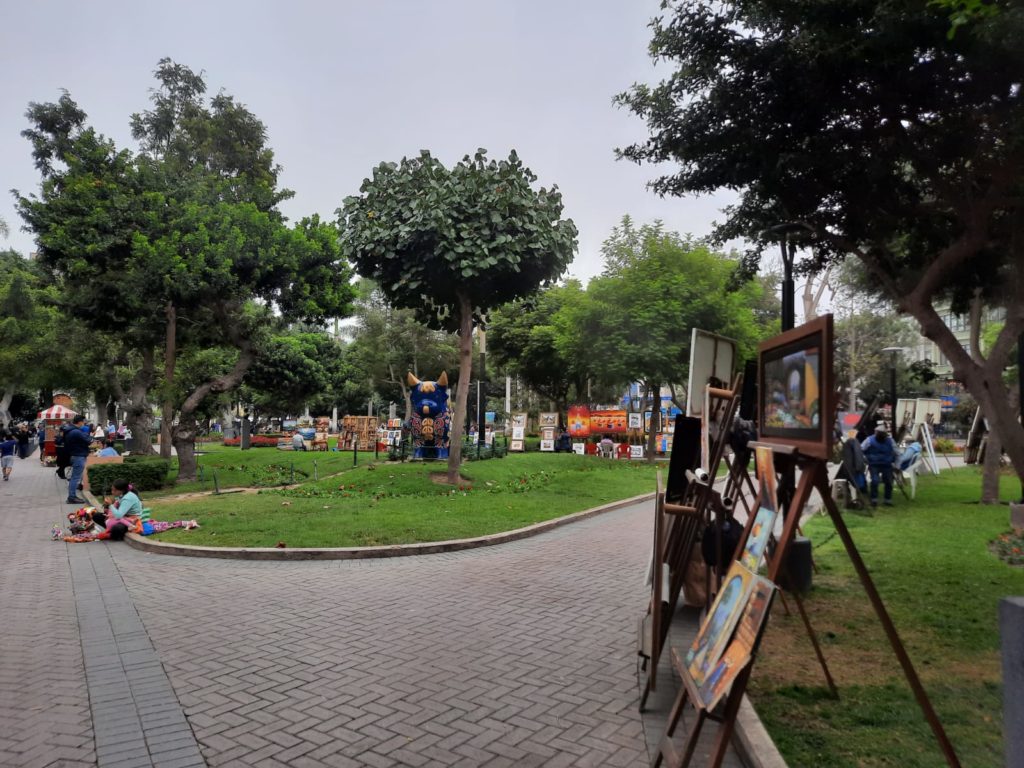
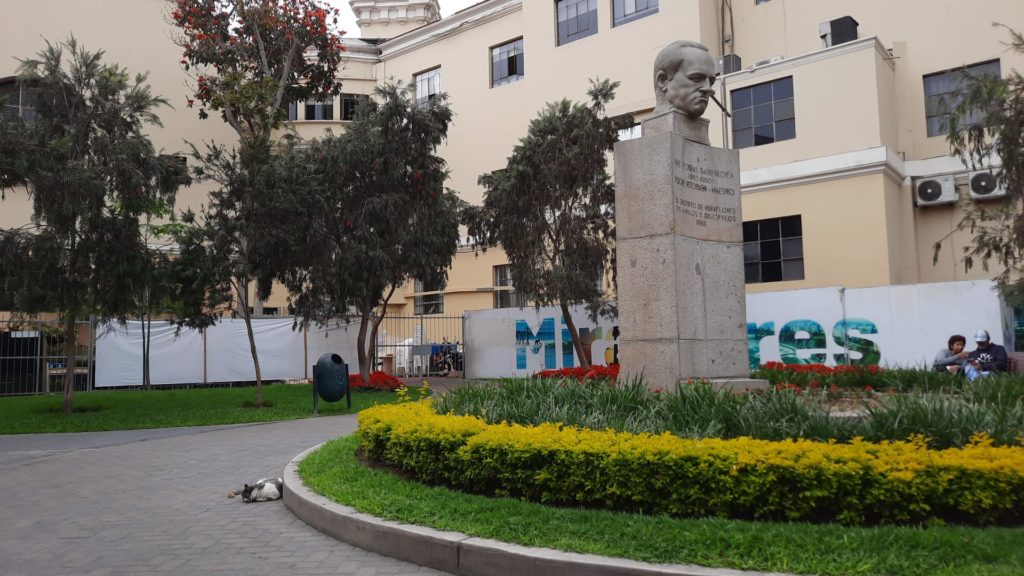
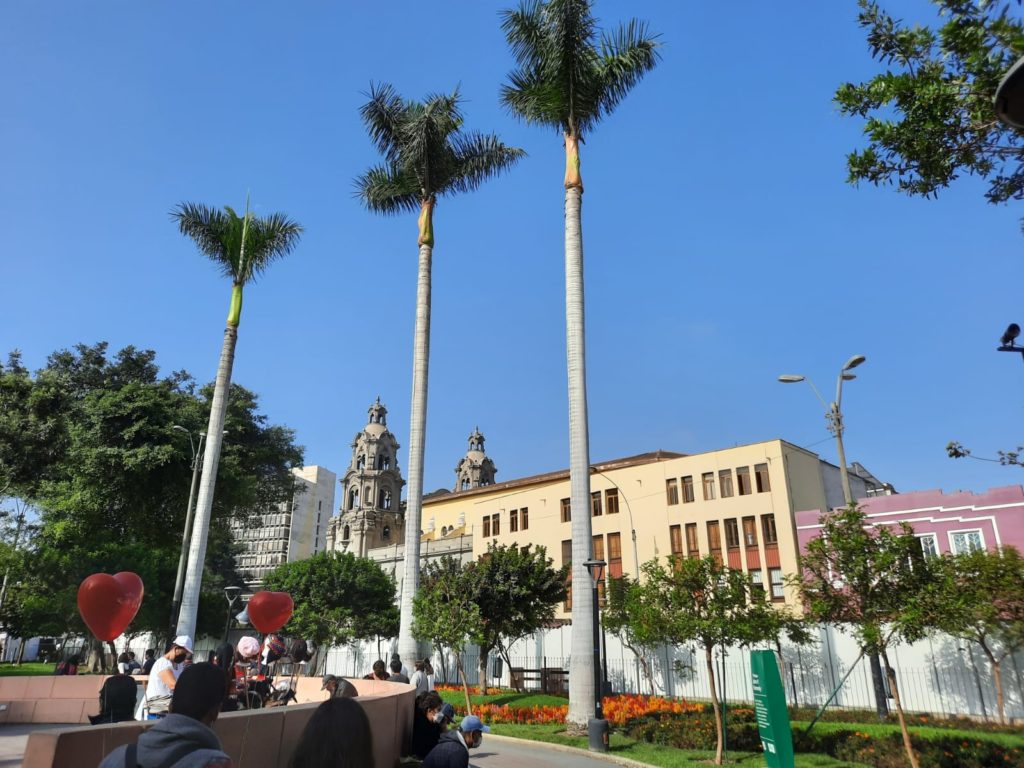
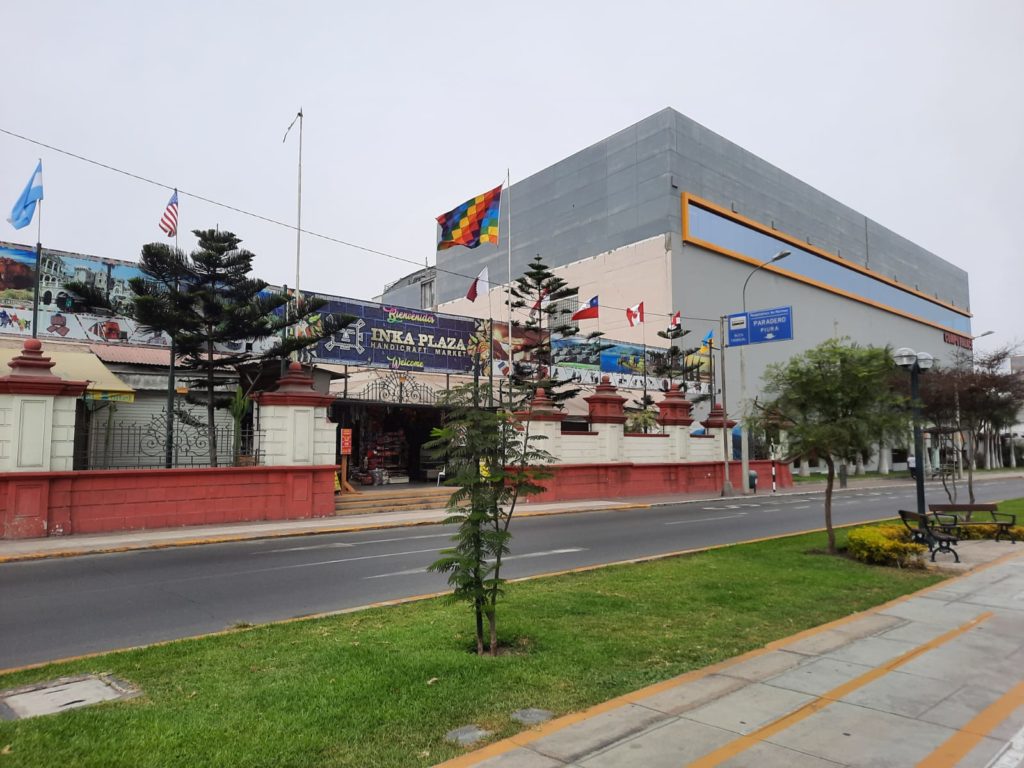
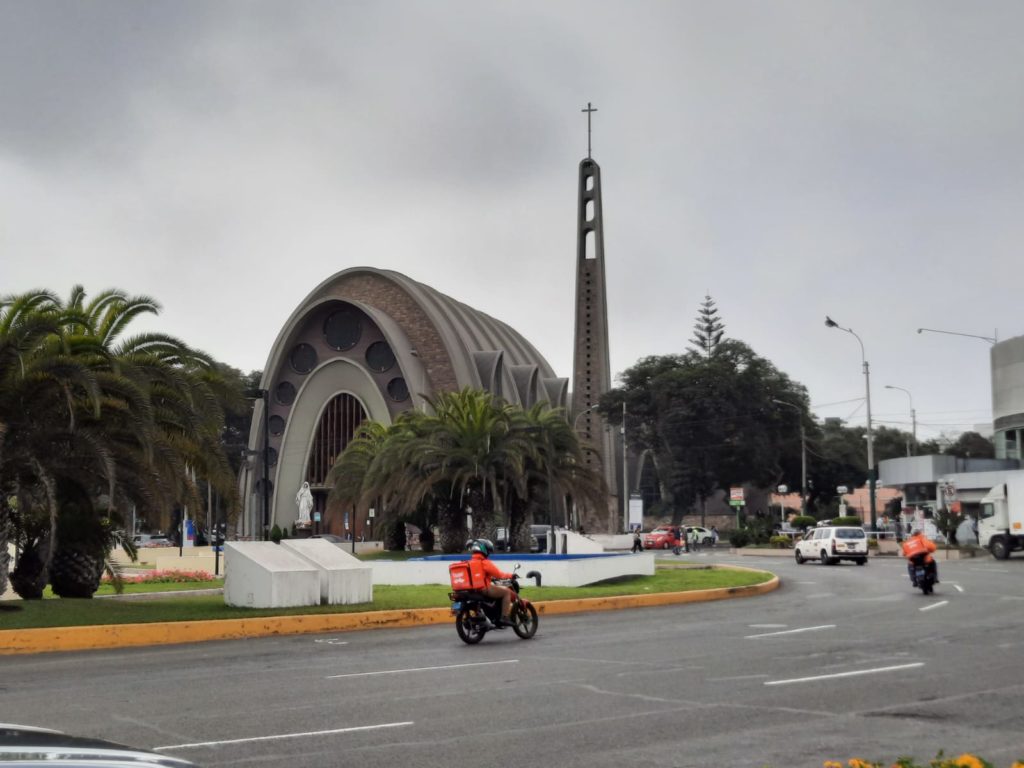
Miraflores
I’m not sure I would have visited Miraflores if my hotel wasn’t there. It’s a relatively wealthy area with plenty of middle class residents and expats. You will find nice cafes charging almost European prices, and if you’re finding Lima a little overwhelming it’s probably a good place for a brief retreat.
In terms of what you can see here, Parque Kennedy (Kennedy Park) is the centre of activity as far as visitors are concerned. It’s a lively park with artists selling their work, and a lot of cats who are looked after (more or less) by local charities. Different markets pop up on different days at one end of the park – I saw souvenirs one day and books another. And the Sala Luis Miro Quesada Garland, which I mentioned earlier, is nearby.
As I also mentioned before, Miraflores is where you will find the big souvenir markets – they’re not fully back up and running post-Covid so I found prices pretty fair without too much bargaining. As Miraflores is pretty central in terms of the parts of Lima you might visit, it’s a good base to get to sites like the Museo Larco, and the pre-Columbian sites of Huaca Pucllana and Huaca Huayamarca.
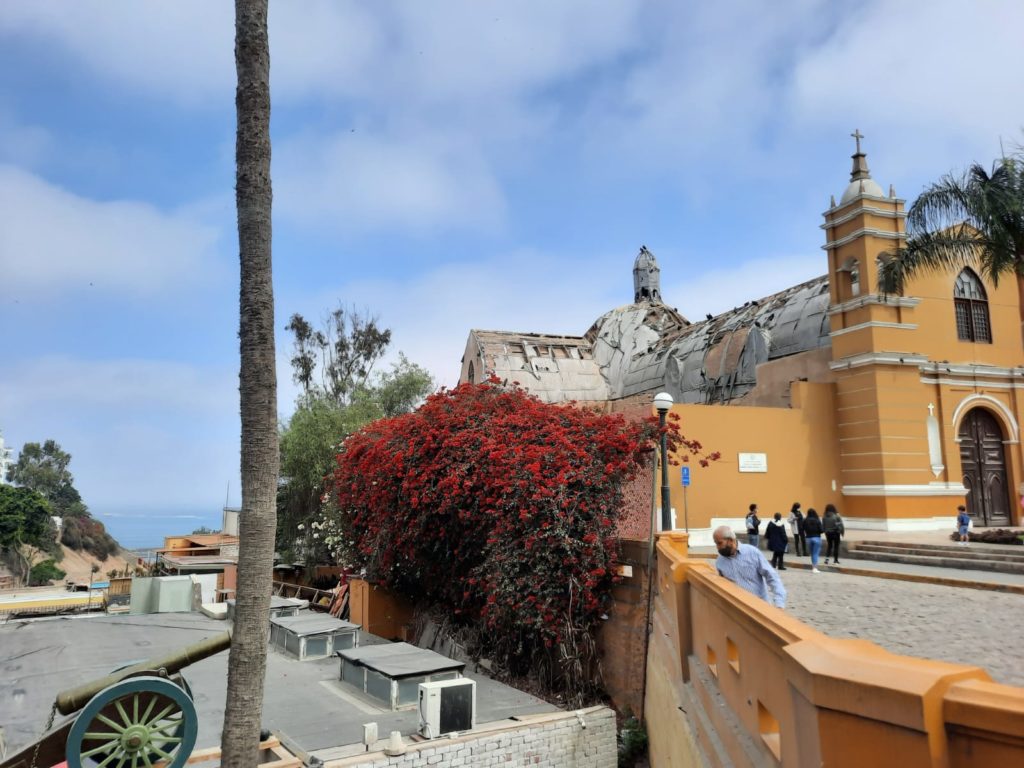
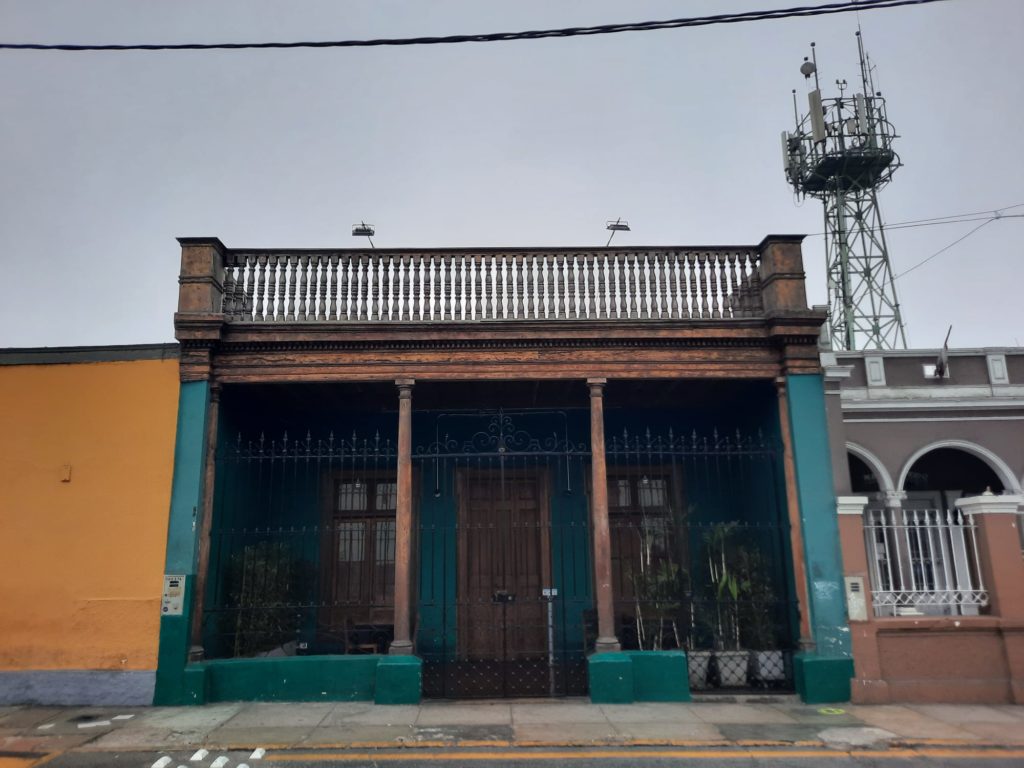

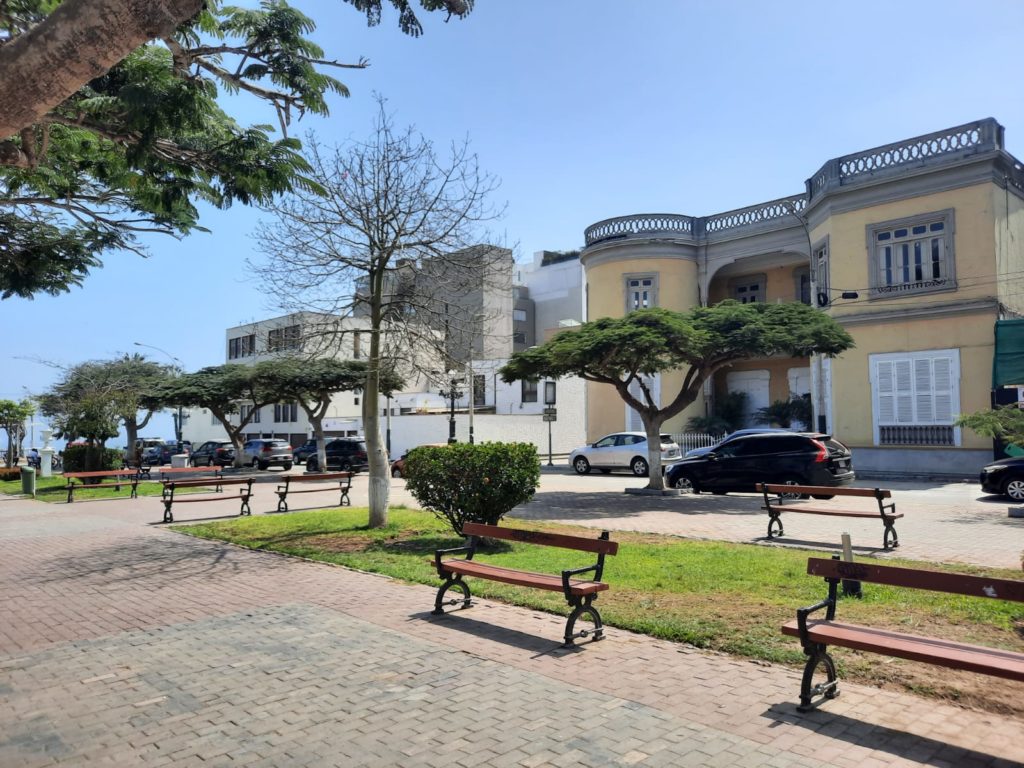
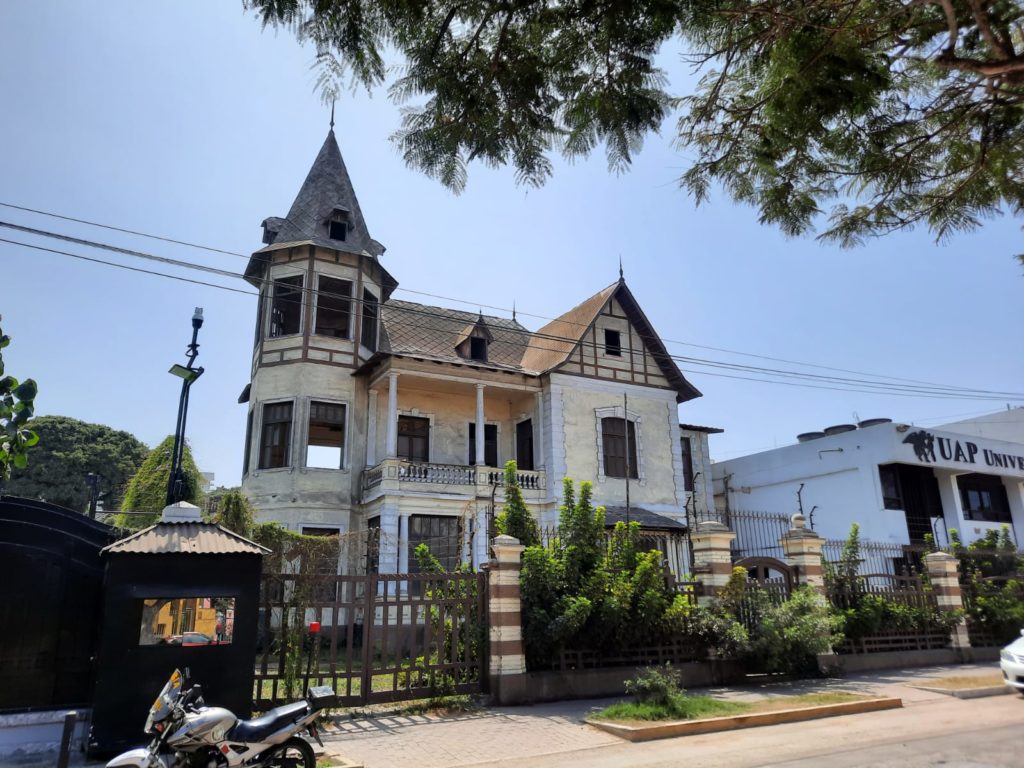
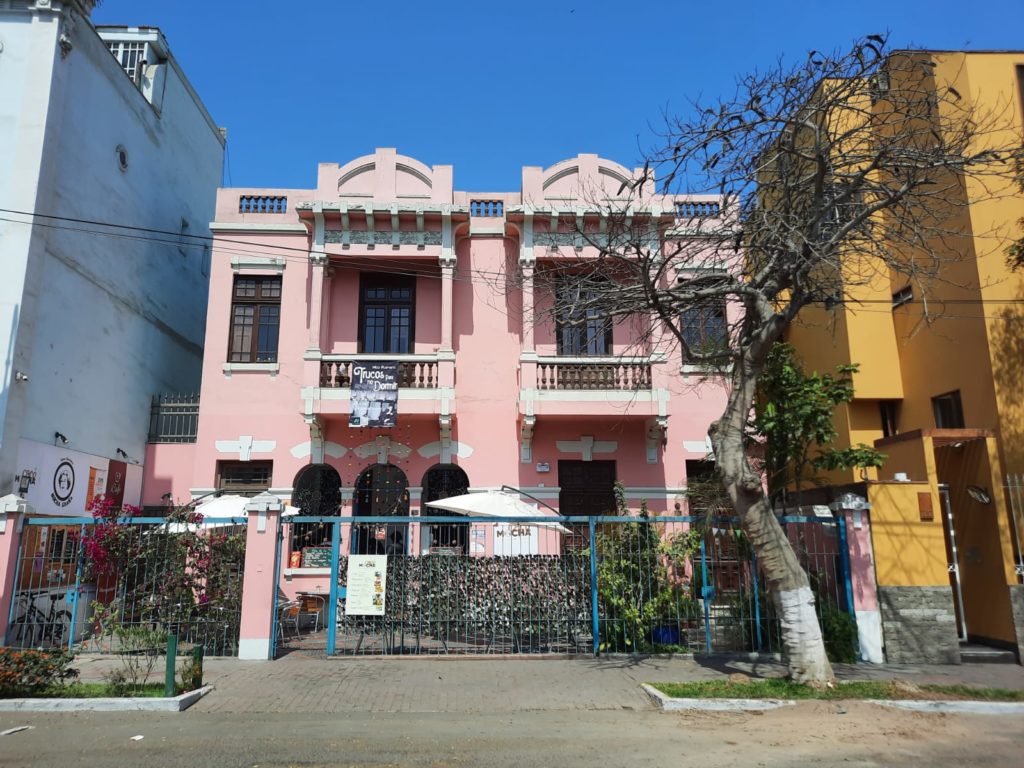
Barranco
And finally in terms of Lima neighbourhoods for culture lovers, we have Barranco. Barranco started life as a separate town; a seaside retreat for the city’s wealthier residents in the early 20th Century. There are thus a lot of impressive Beaux Arts mansions, some in a picturesque state of decay. I heard from one tour guide that any building over 100 years in Peru becomes part of the national heritage, which clearly complicates things for those who would prefer to replace a dilapidated, costly and not particularly important historic building. But I digress.
Barranco these days is firmly ‘arty’. There is a lot of street art, bright colours, design and art shops dotted around the place, and nice restaurants to boot. It’s a good district to wander in, between streets of impressive houses and a promenade overlooking the sea and looking back towards Miraflores. Don’t stray too far in the direction of the beach, however – I didn’t verify it for myself but my guidebook warned me it may not be too safe.
My highlight in Barranco was the Museo Pedro de Osma. This is a collection of art mostly of the Cusco School, and in hindsight was great to have visited before I went to Cusco and saw a lot of similar paintings and sculptures in situ in churches.
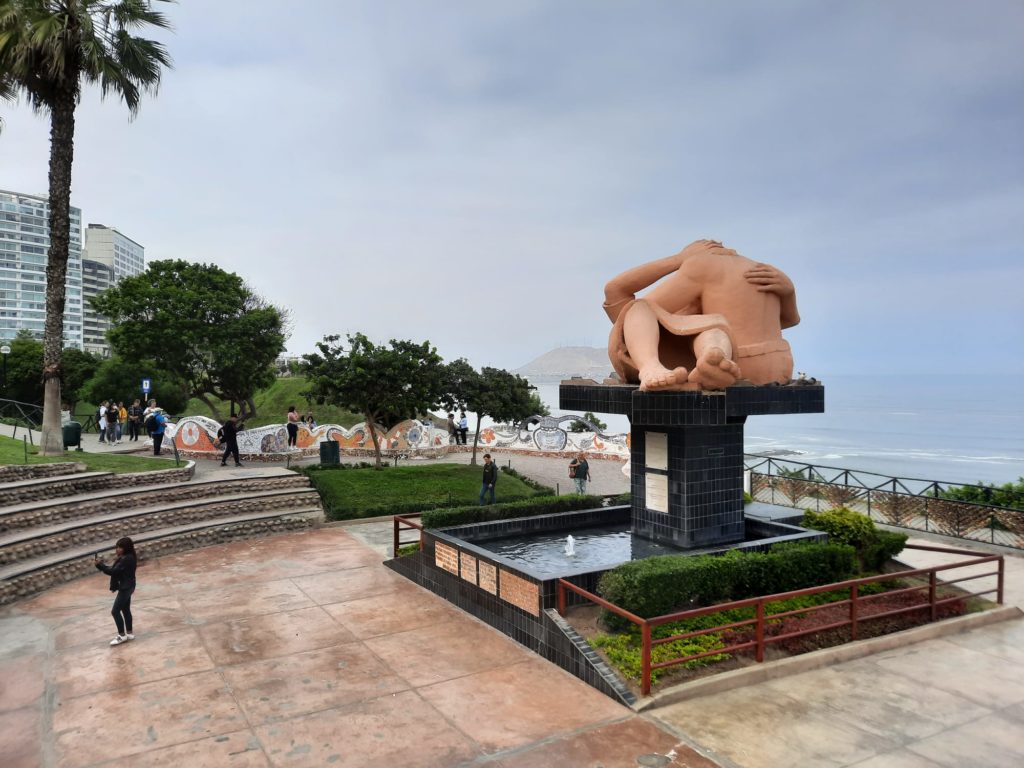
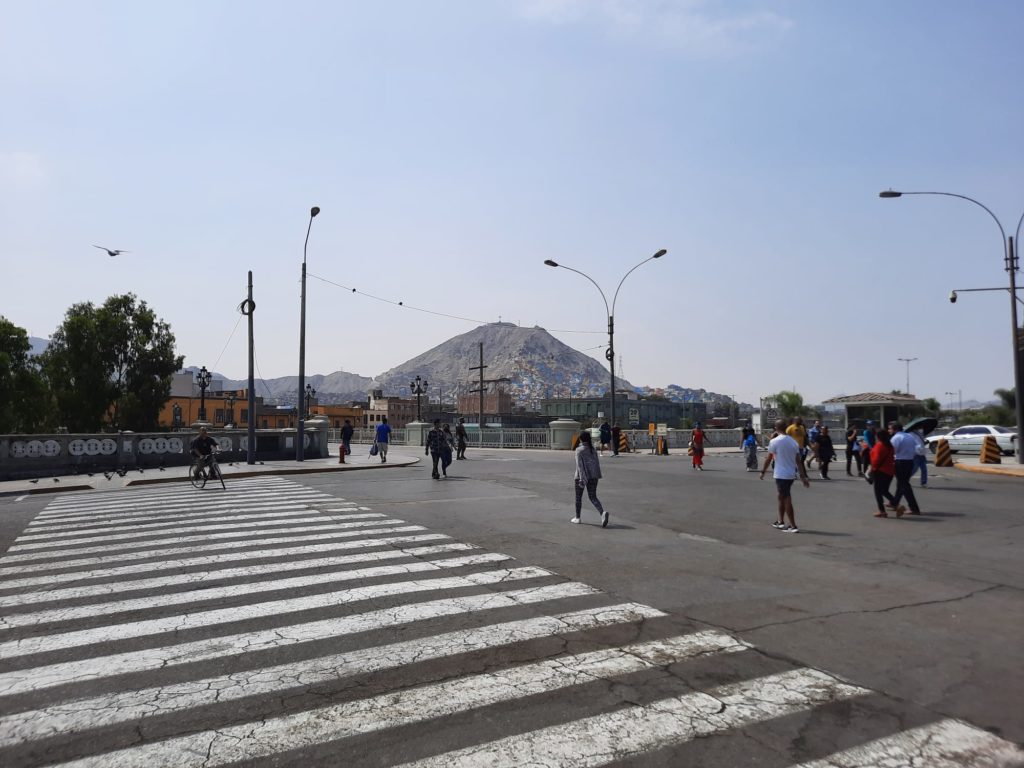
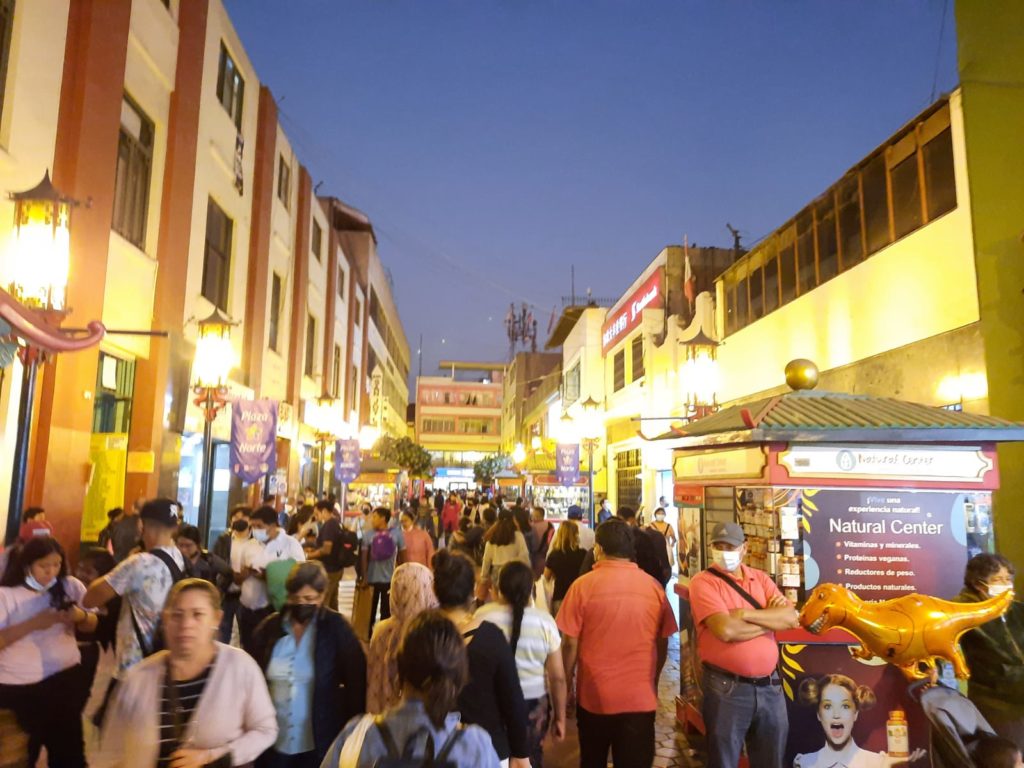
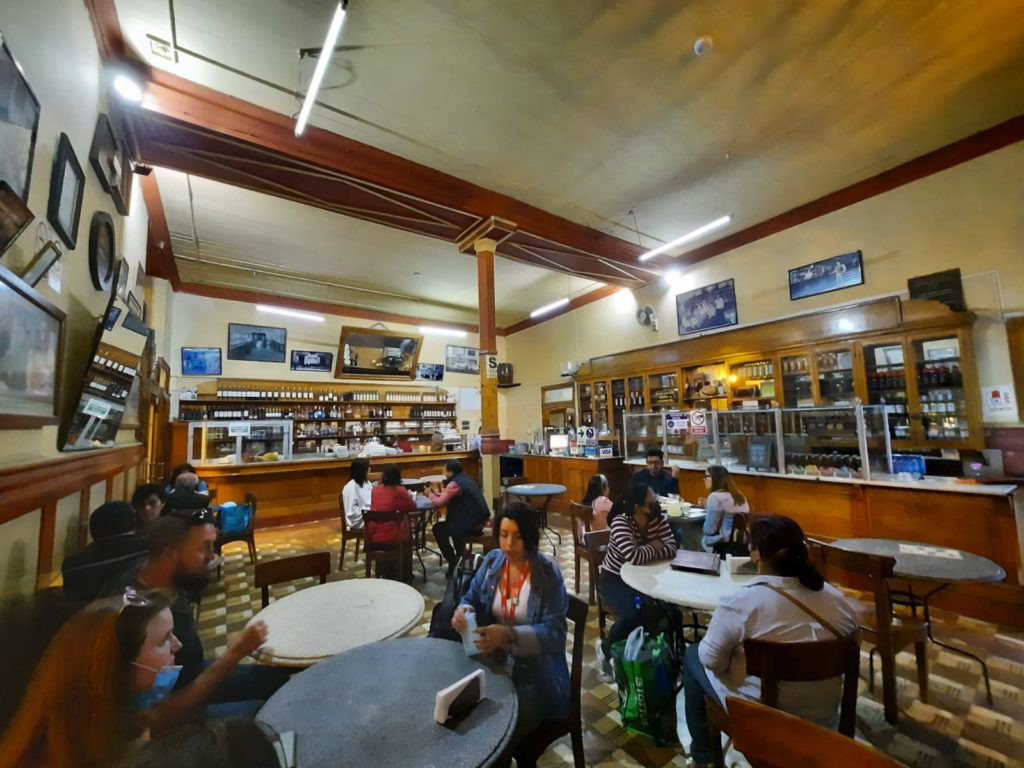
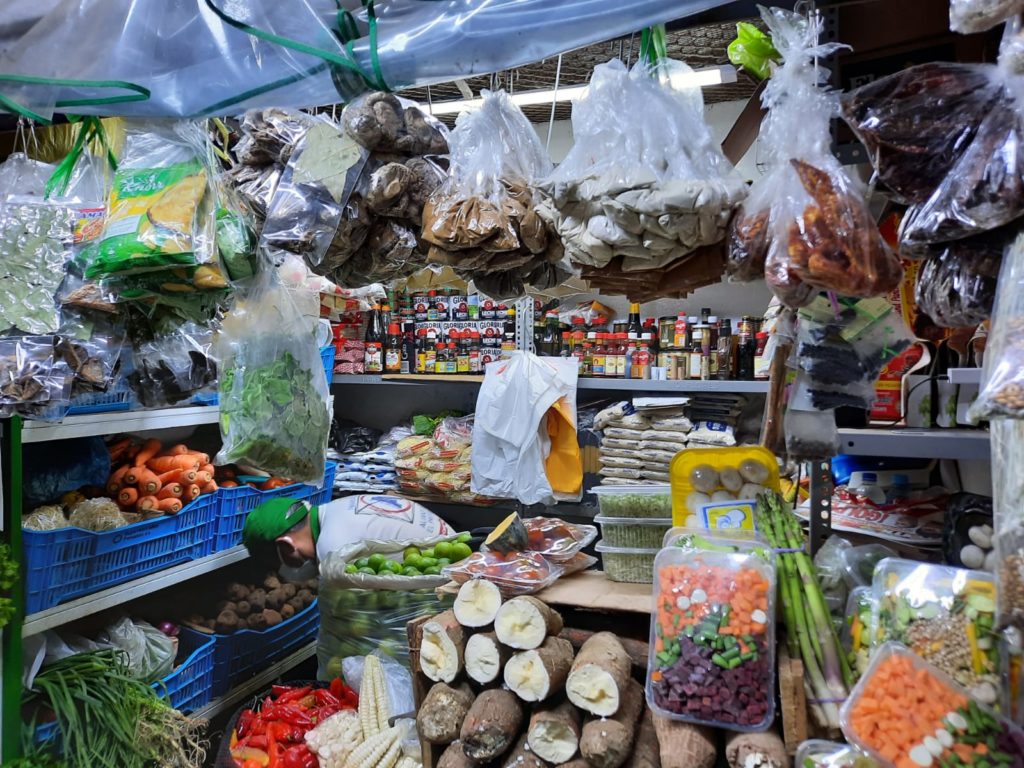
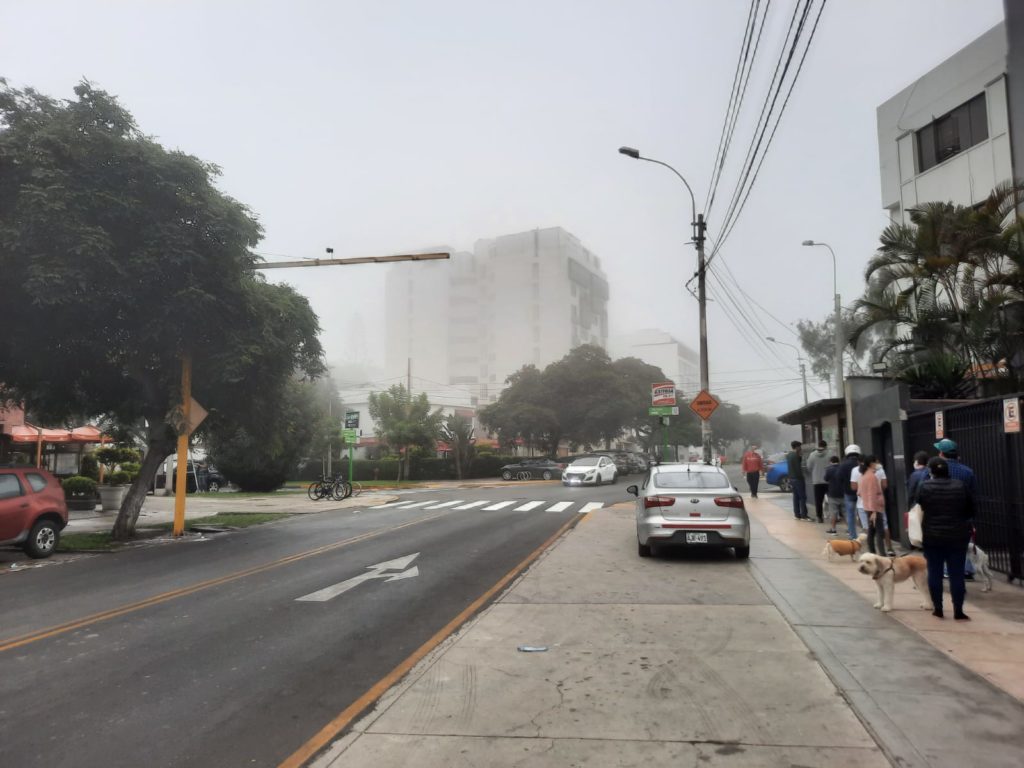
Some Practical Tips
Finally, a few pointers for your trip:
Do keep your wits about you. Lima is a safe city in my experience, although others I met had negative experiences. Be careful with your valuables, and when hailing taxis.
Do have a working Uber account on your phone. There is an efficient public bus system between central areas, but I found it much easier to call an Uber. It was safe and cheap, and removes language barriers and the need to negotiate fares before you set off.
Do chat to the locals. Lima’s residents are a friendly bunch on the whole, and I learned a lot from chatting with tour guides, taxi drivers and others. Try picking up a few phrases in Spanish before you head to Peru, your efforts will be appreciated and it will help a lot if you want to get off the beaten track.
Don’t believe the opening hours you read in guidebooks or even on websites. I don’t know if this is Covid-related or just Lima-related, but I found a lot of variations on printed opening times and hours. Just go with it!
Don’t be afraid to try the food! Sure, you could spend your time at McDonalds, KFC and Starbucks, but how boring is that?! I sampled the full range from fancy restaurants, to local places where a hearty lunch costs about £2, to street food. And no stomach issues. Although I heard about others who did, so maybe don’t forget the Immodium either…
Don’t forget sunscreen. Even if it feels chilly when you leave the hotel, you can burn quickly once the sea mist dissipates. It’s close to the equator, after all.
Trending
If you see this after your page is loaded completely, leafletJS files are missing.

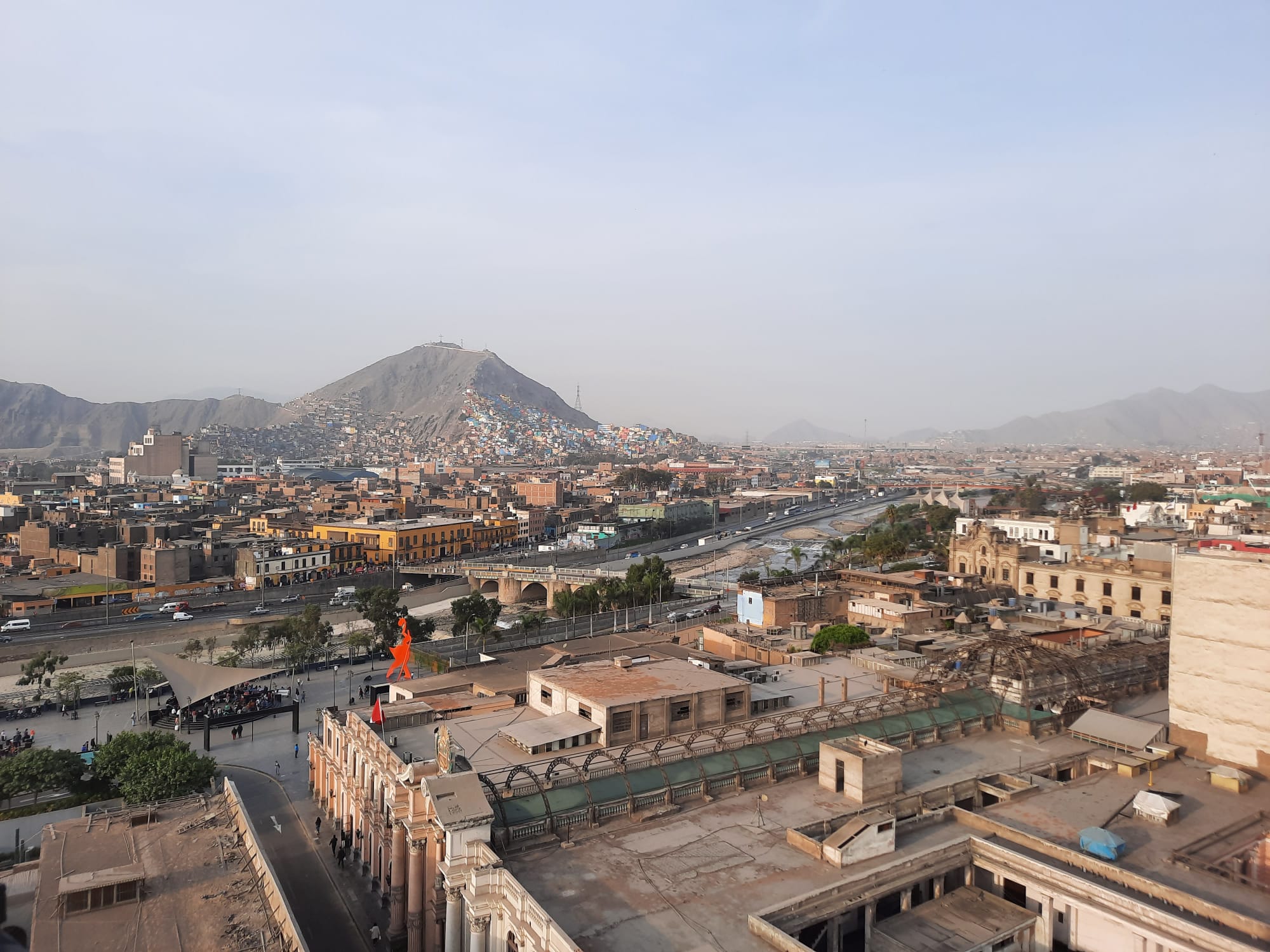
9 thoughts on “Lima For Culture Lovers”